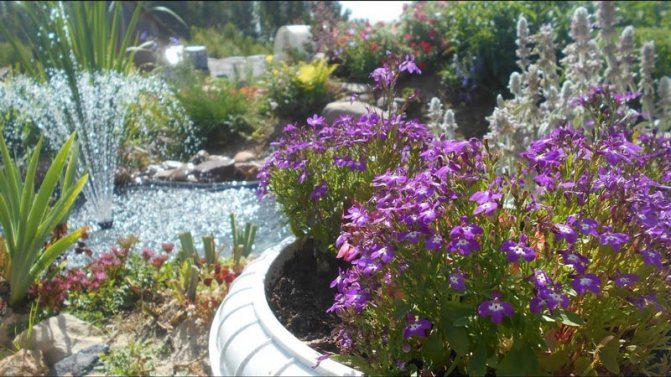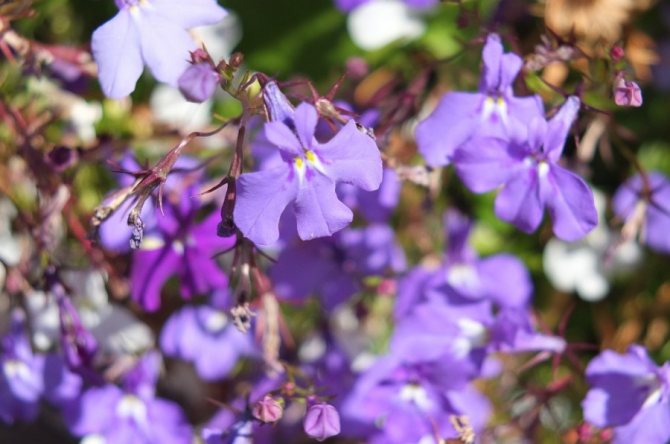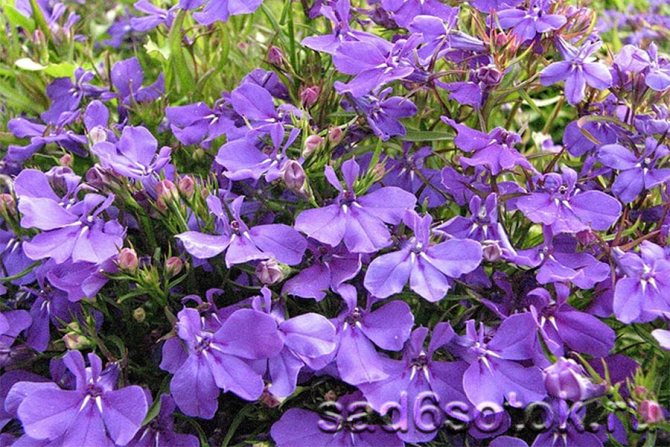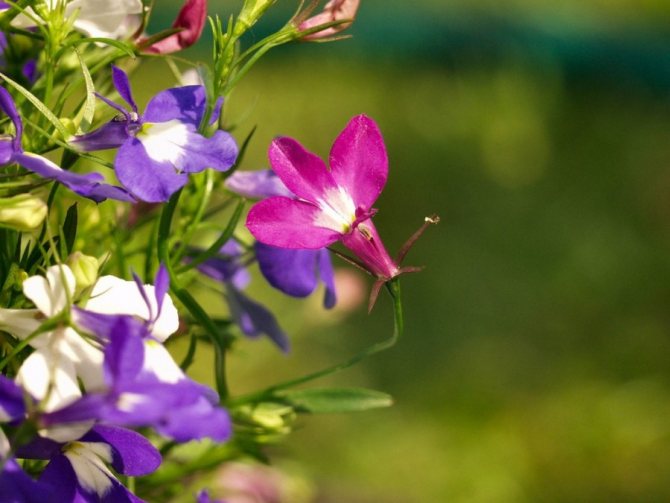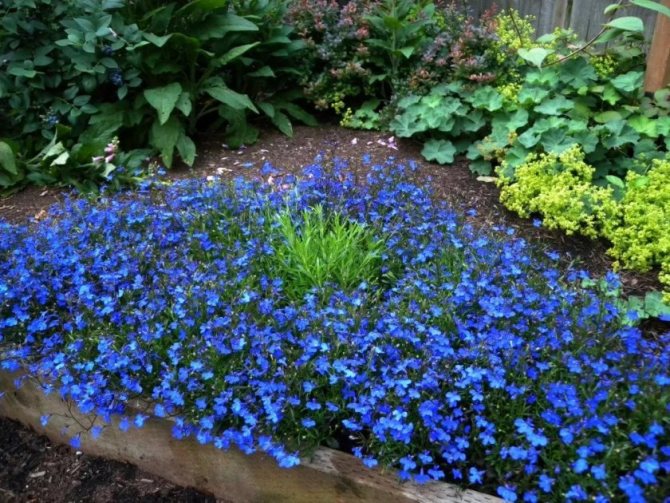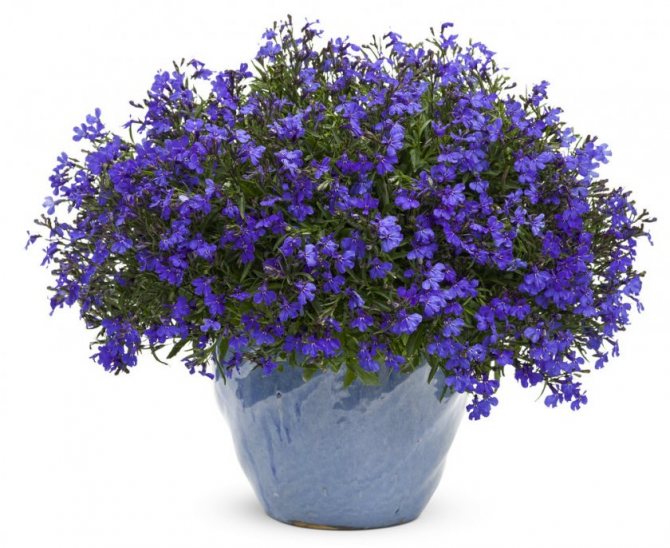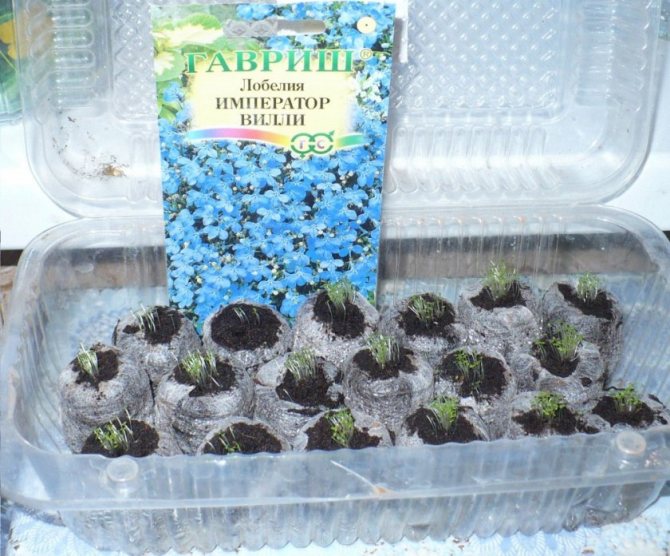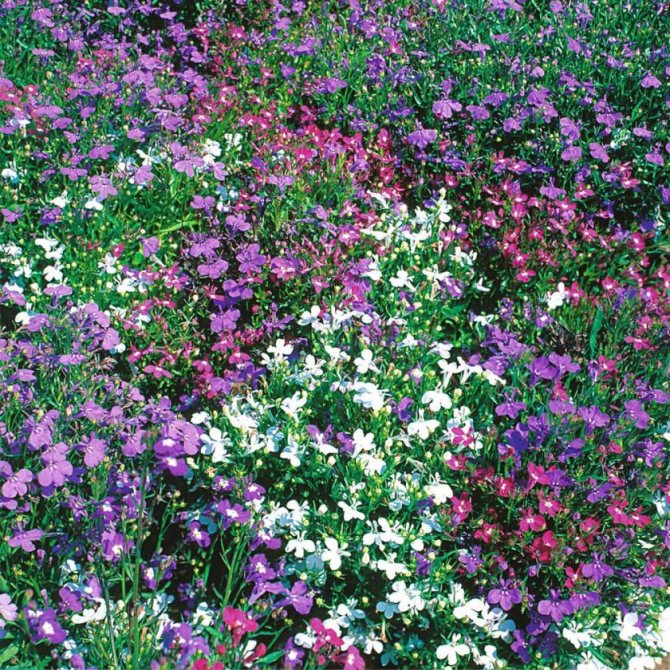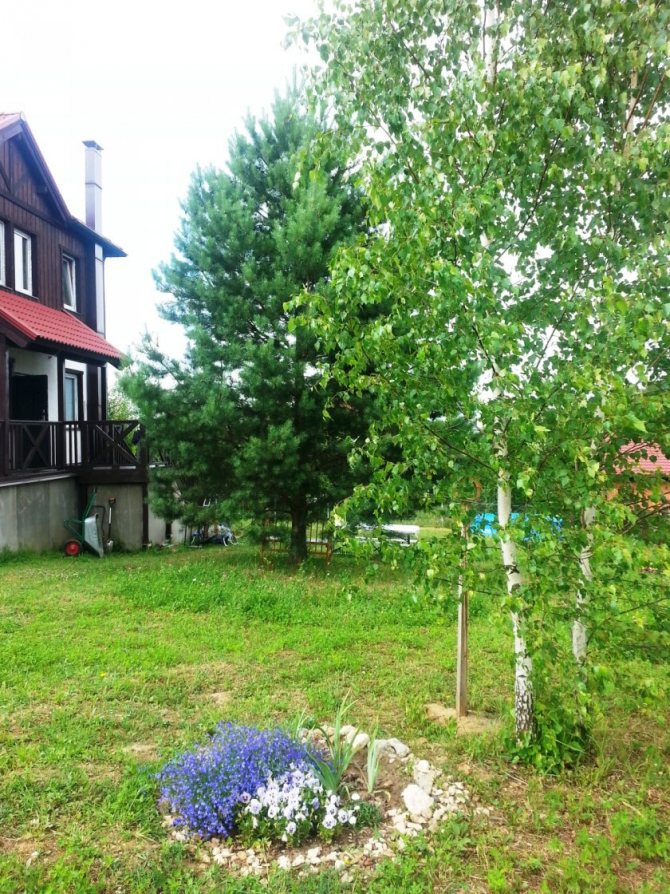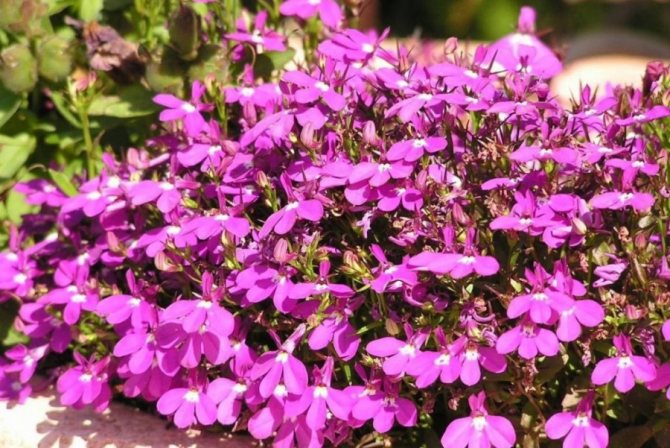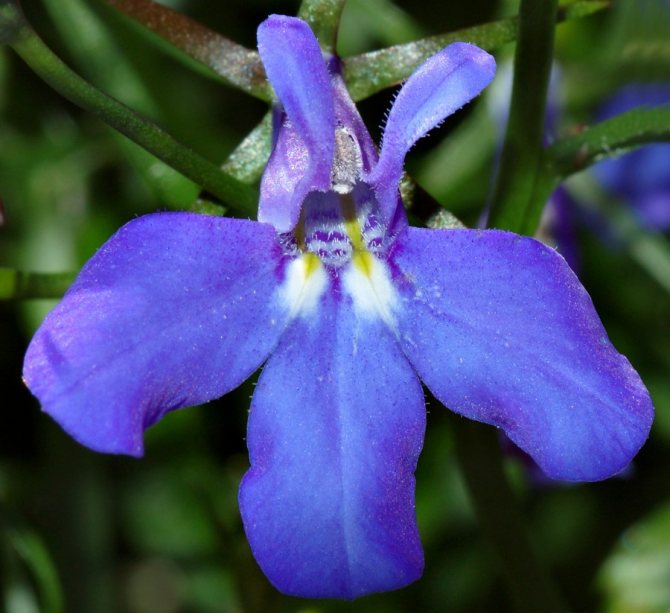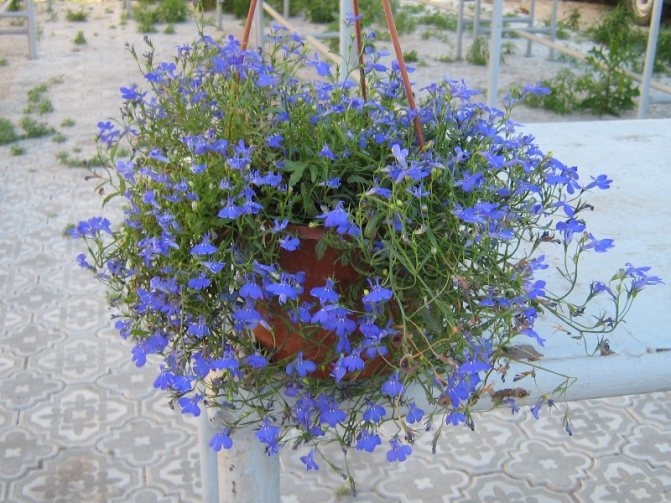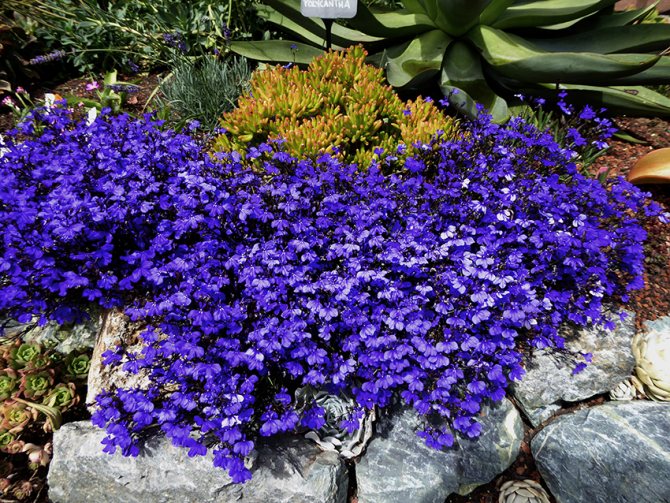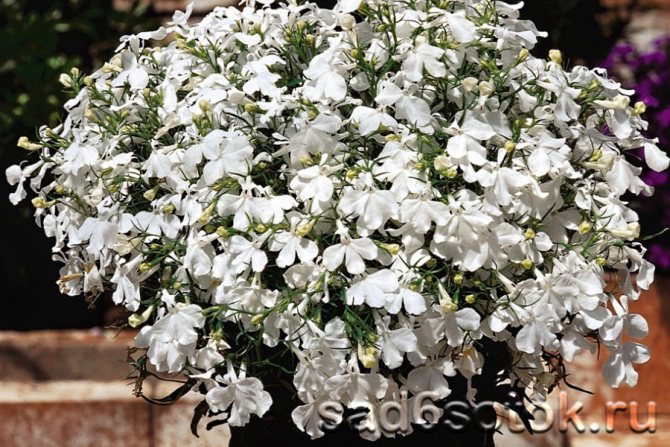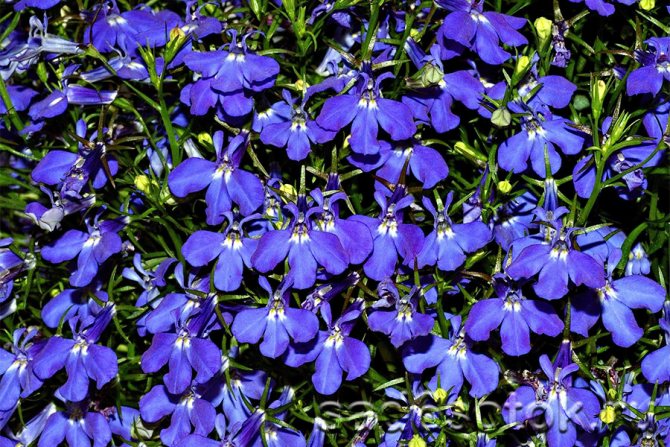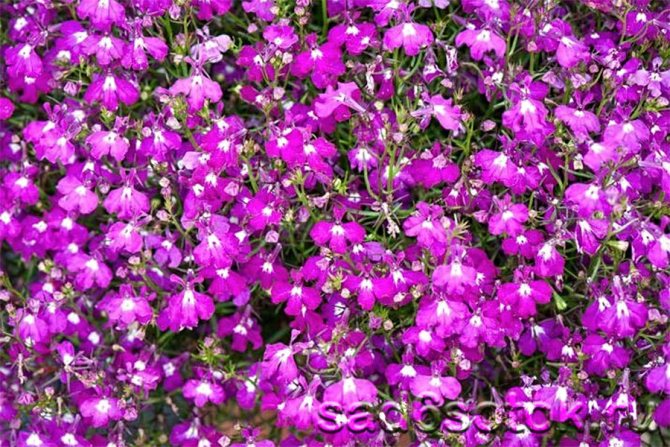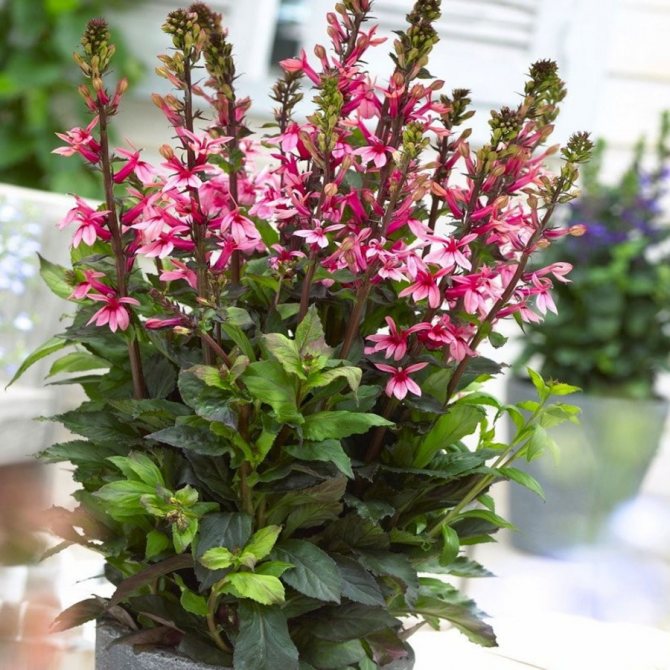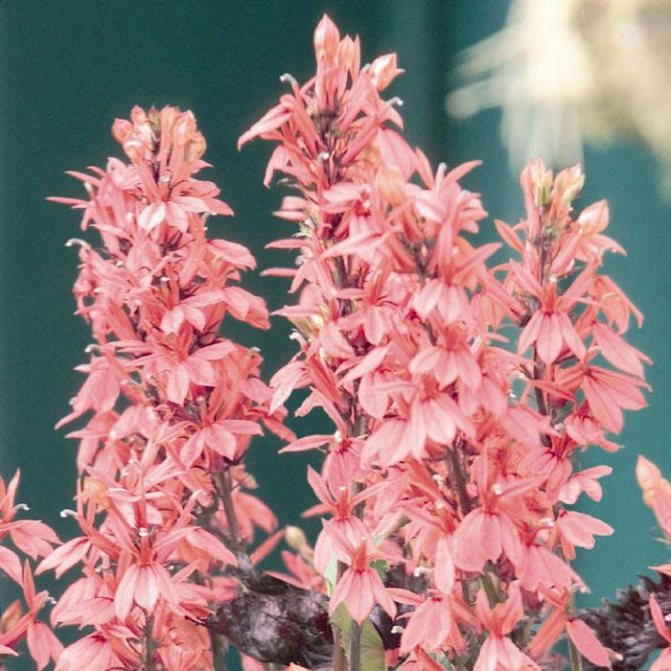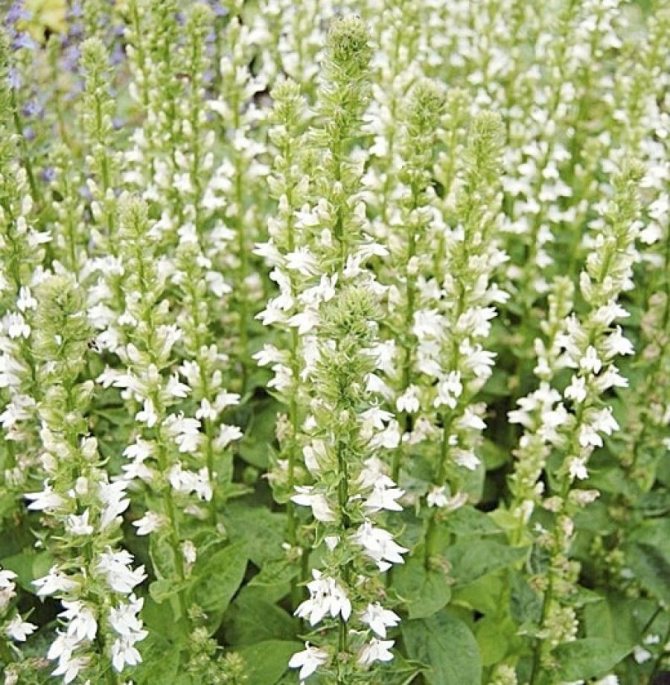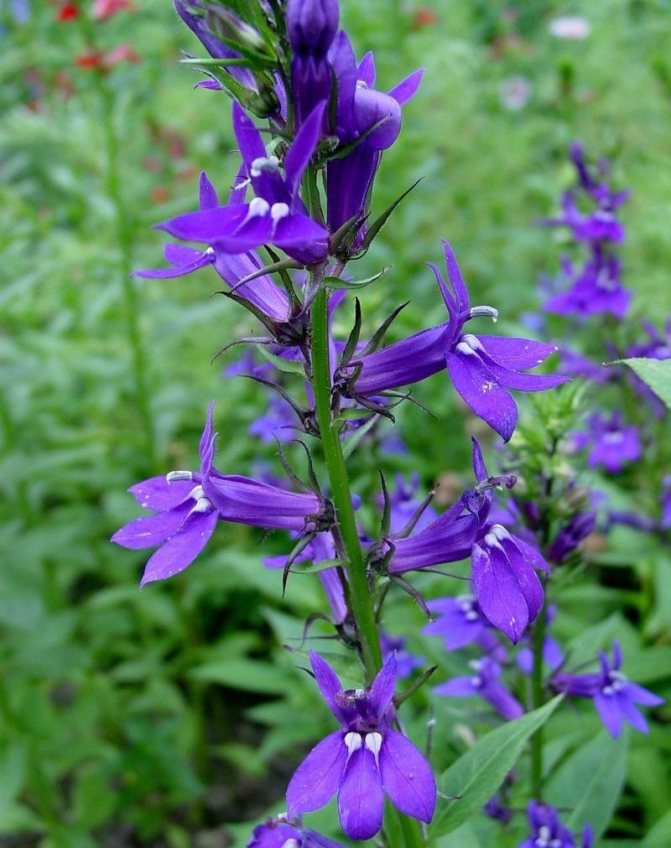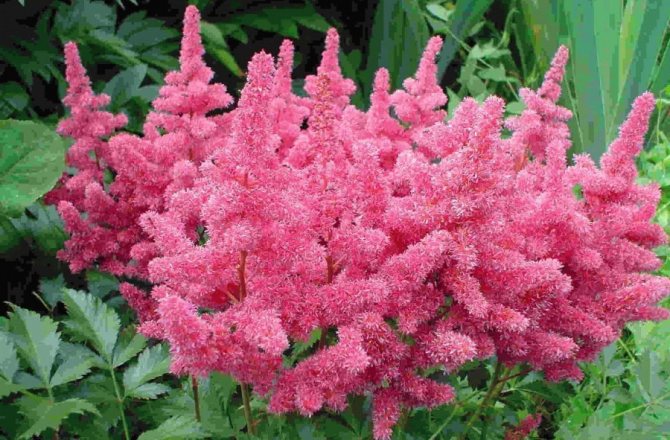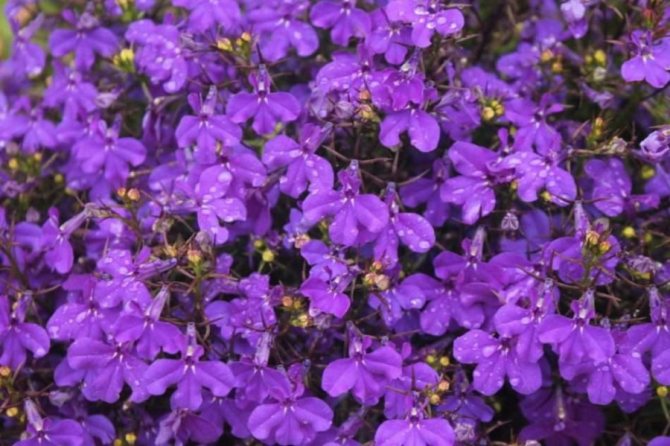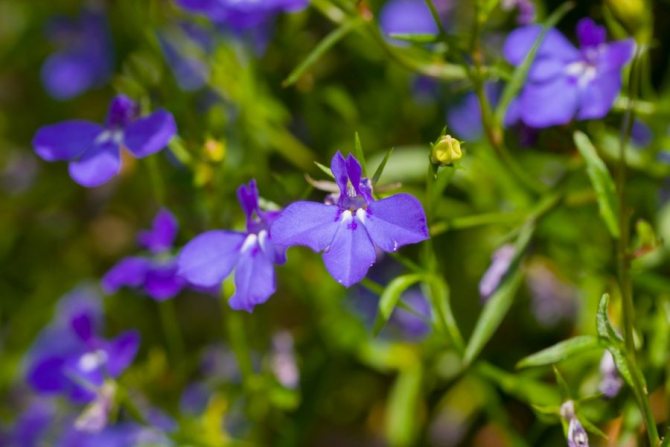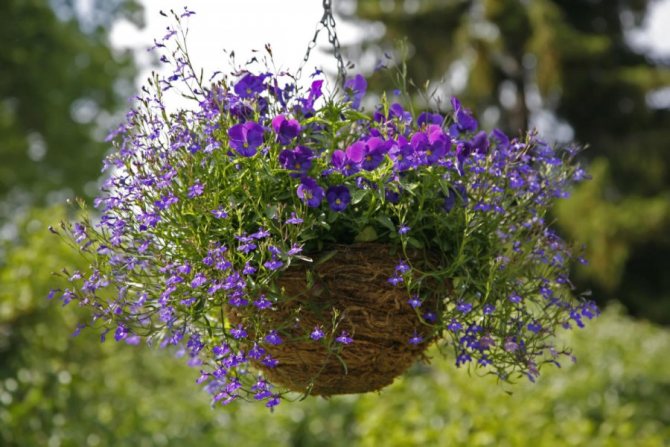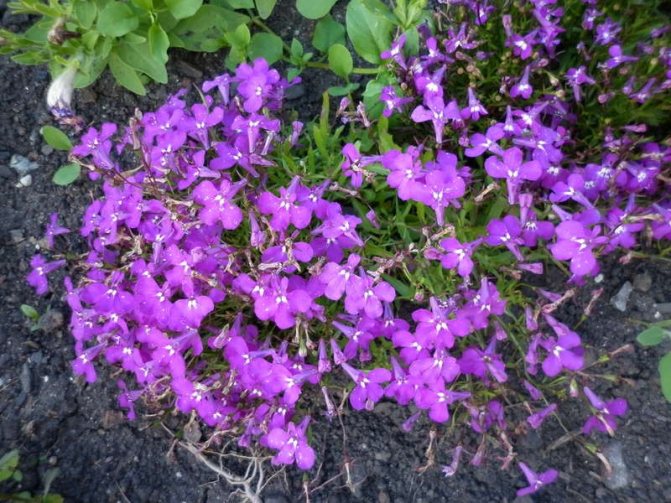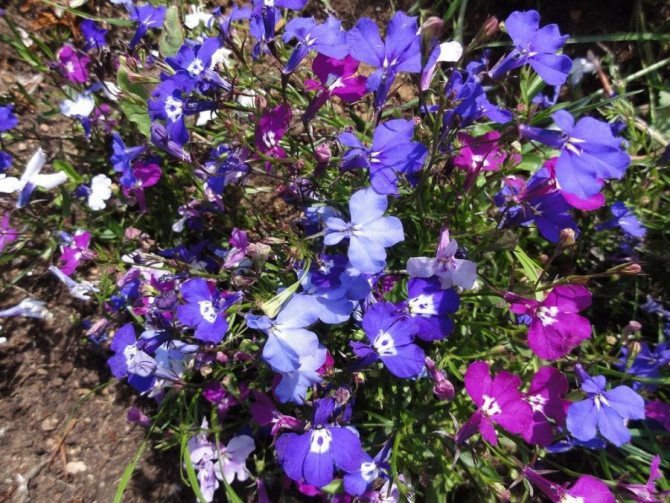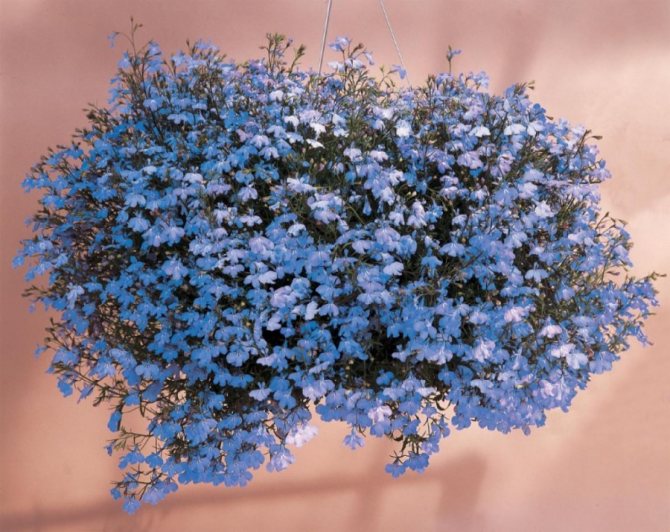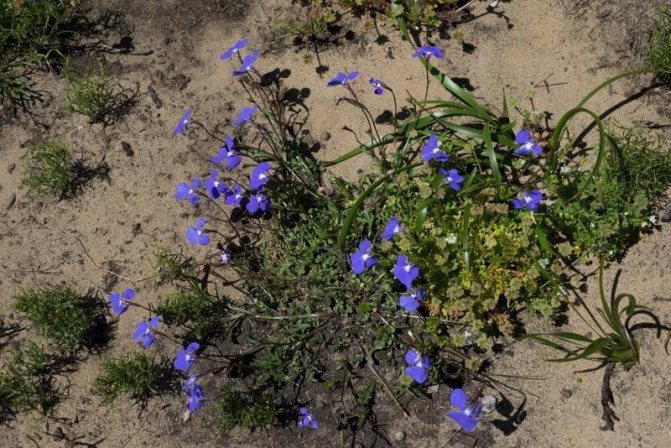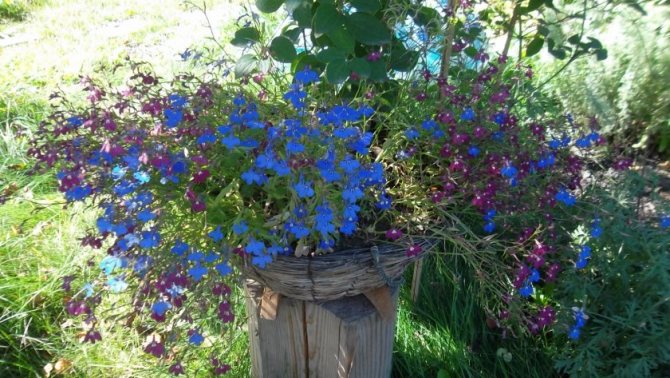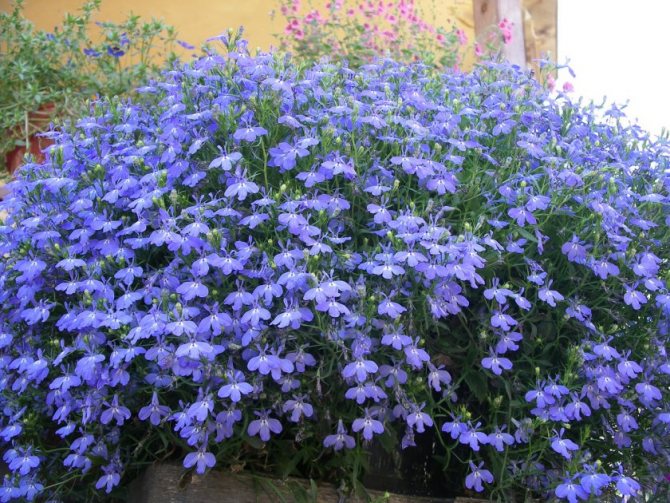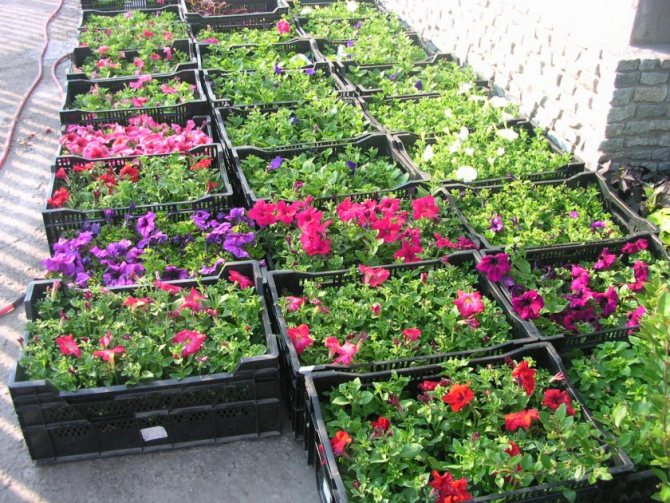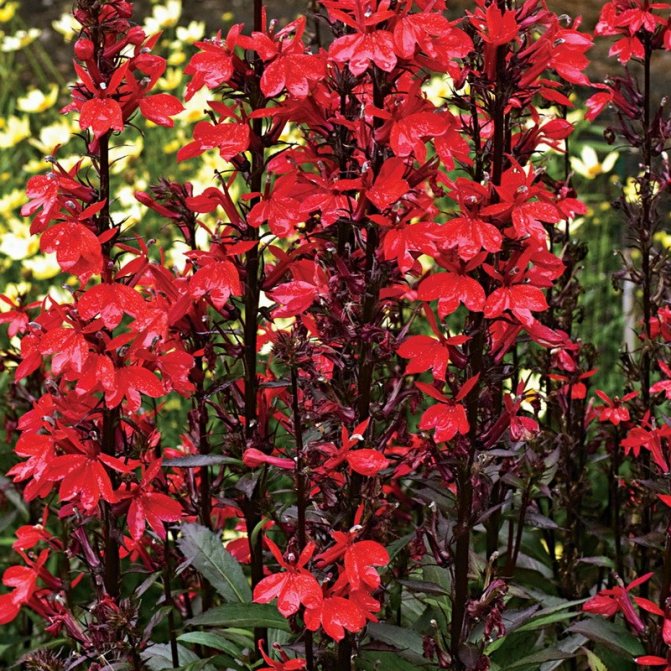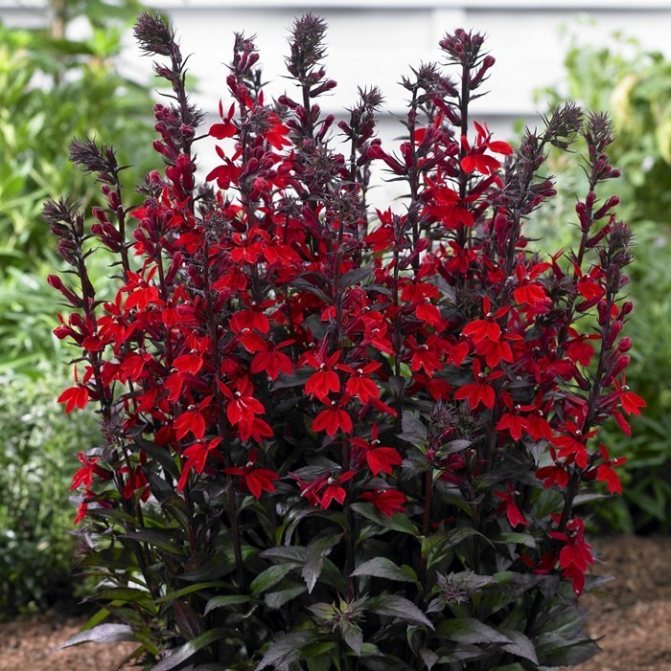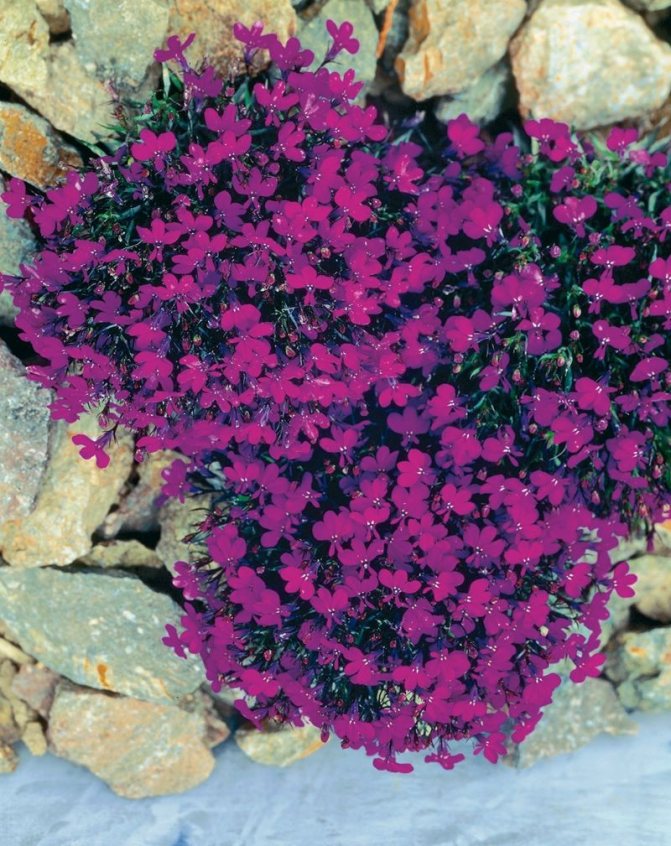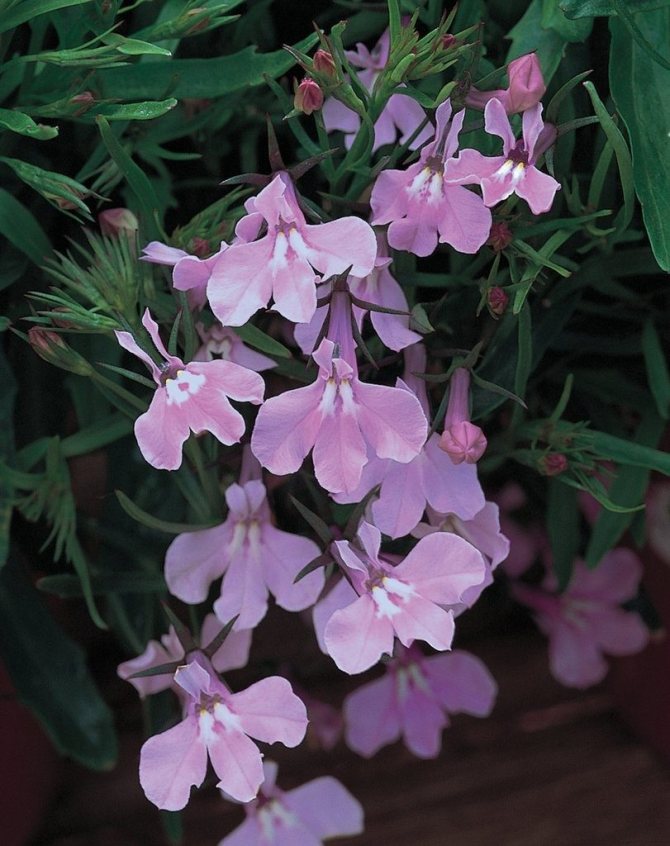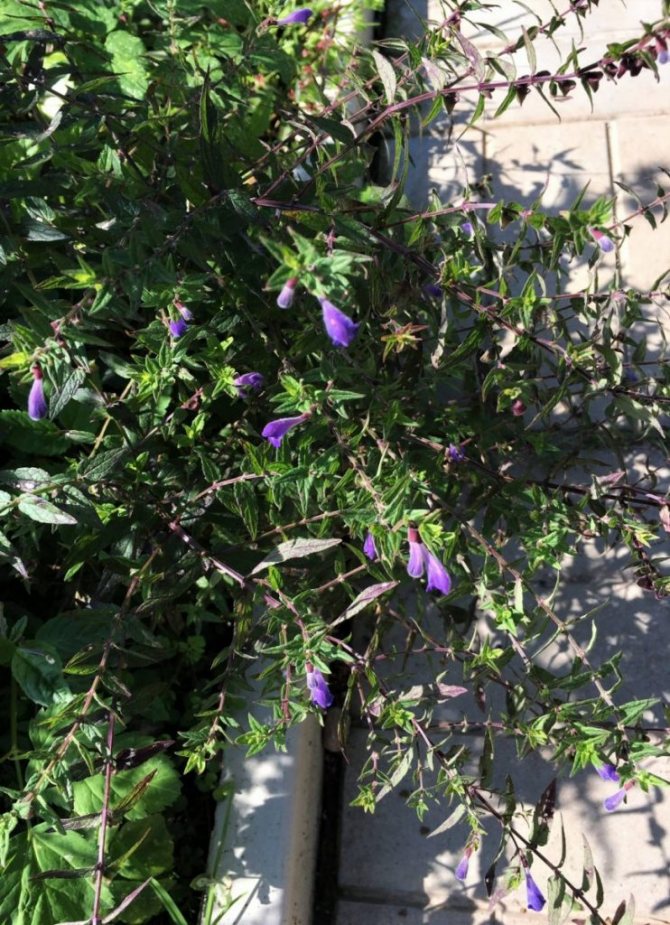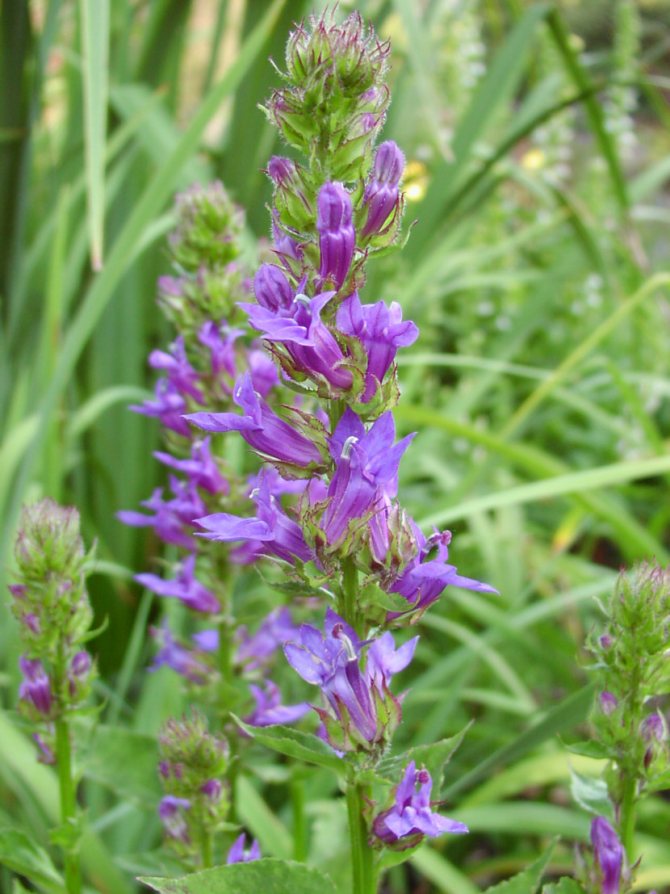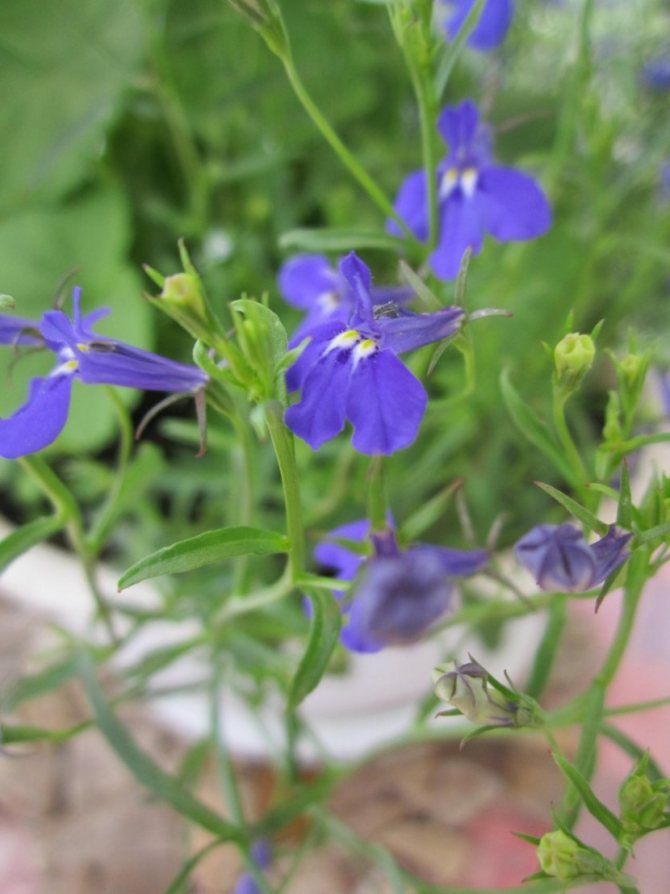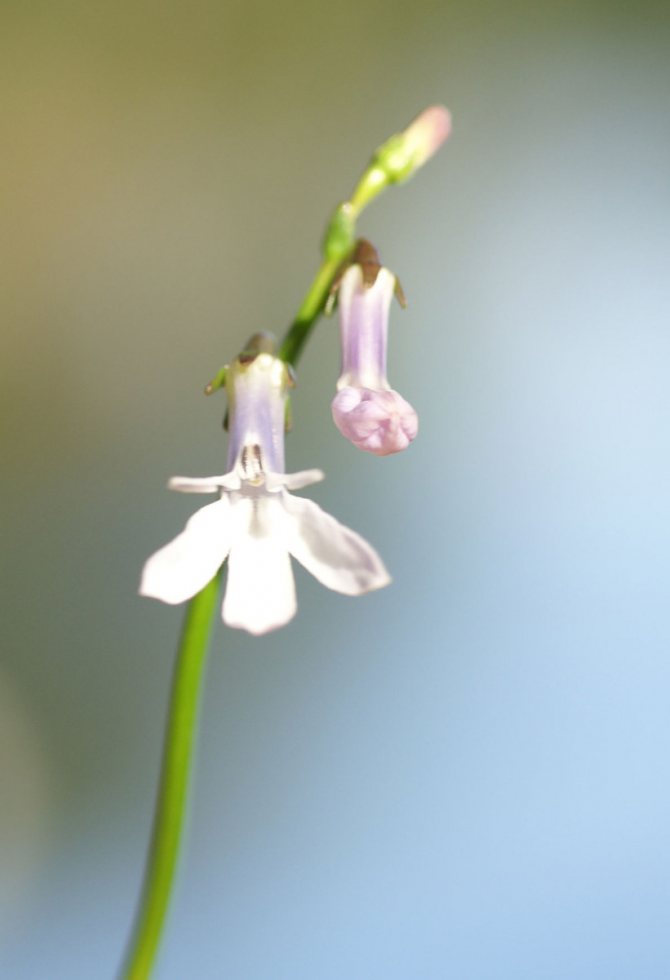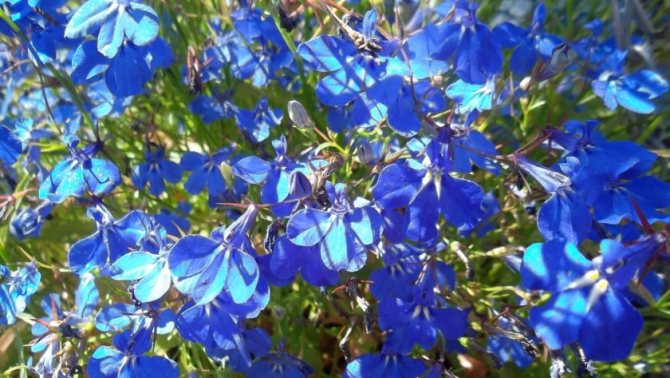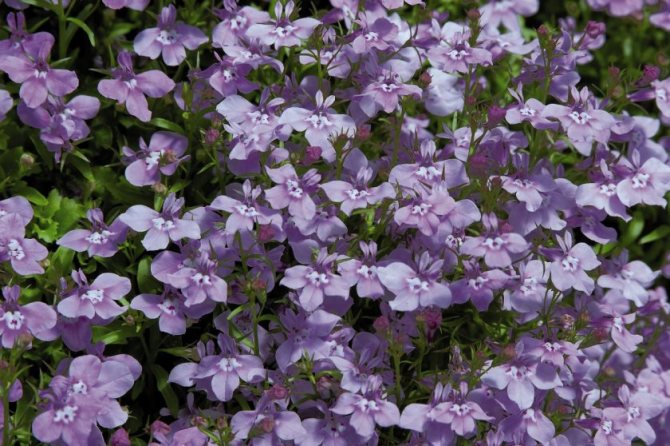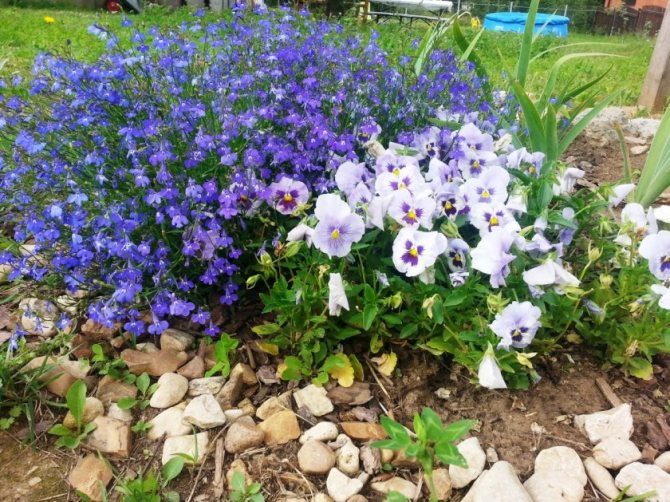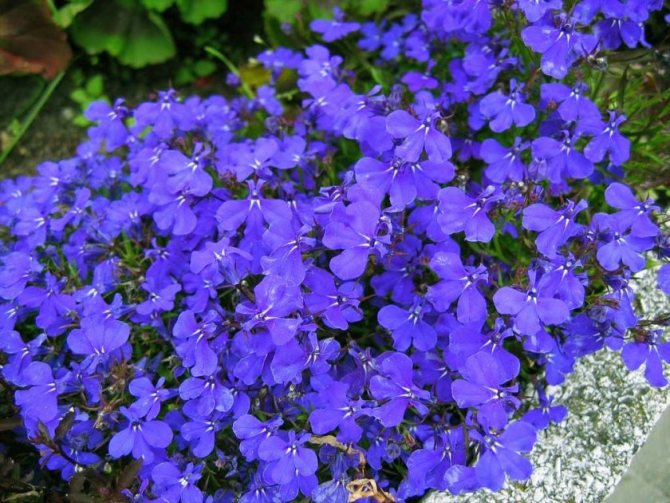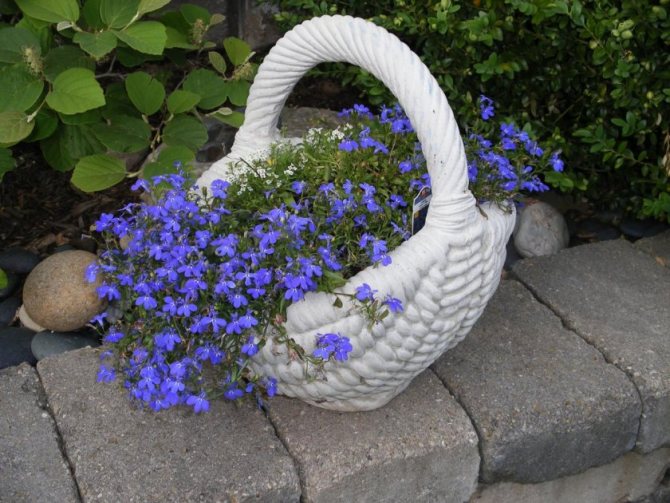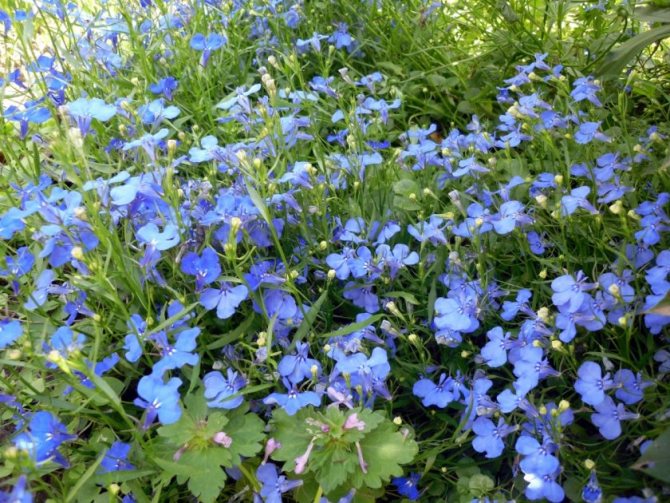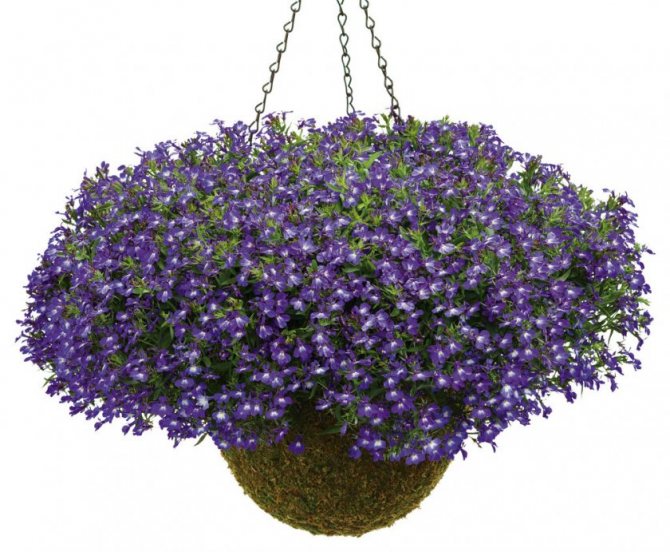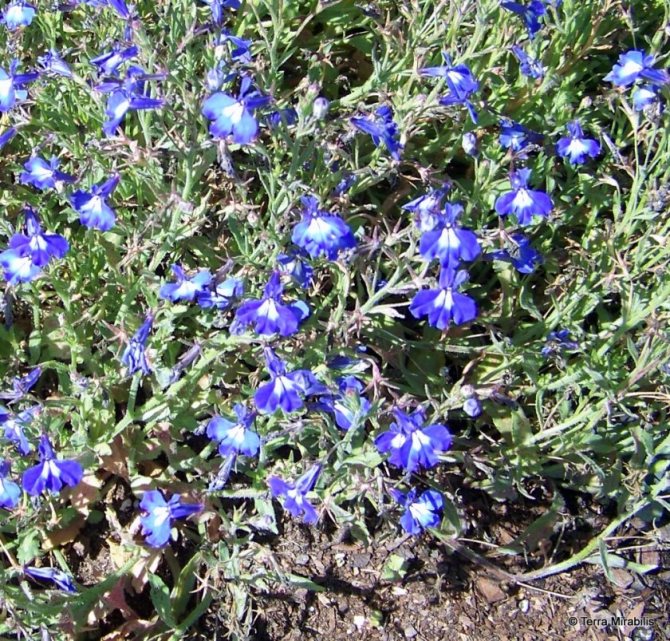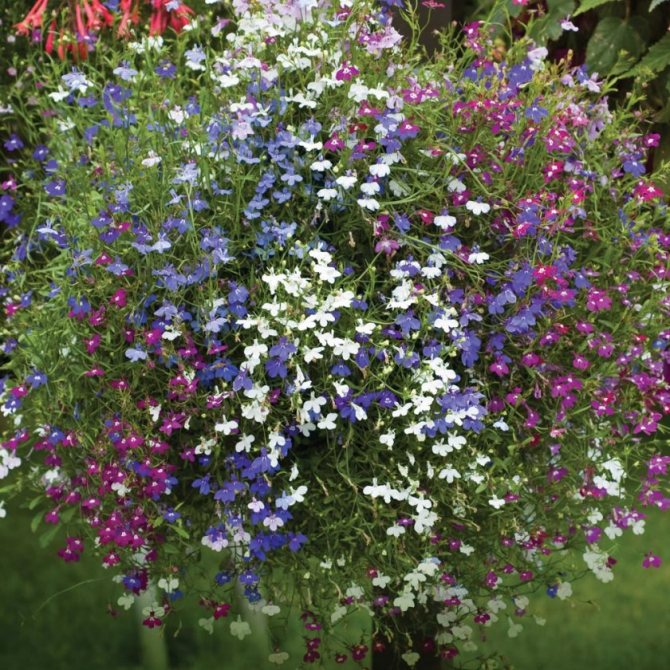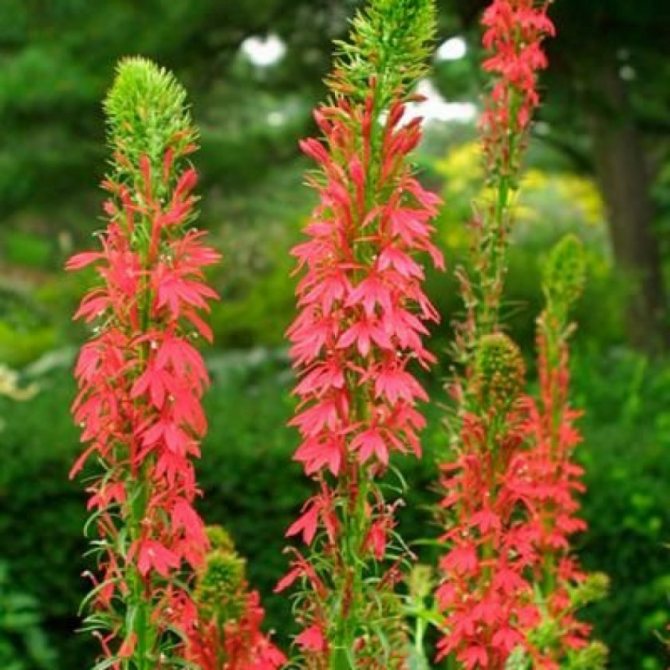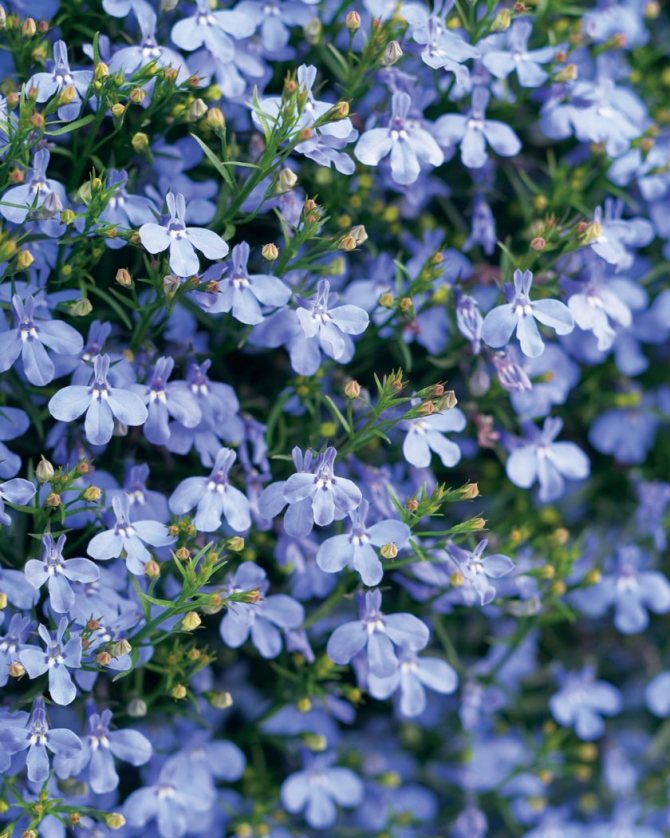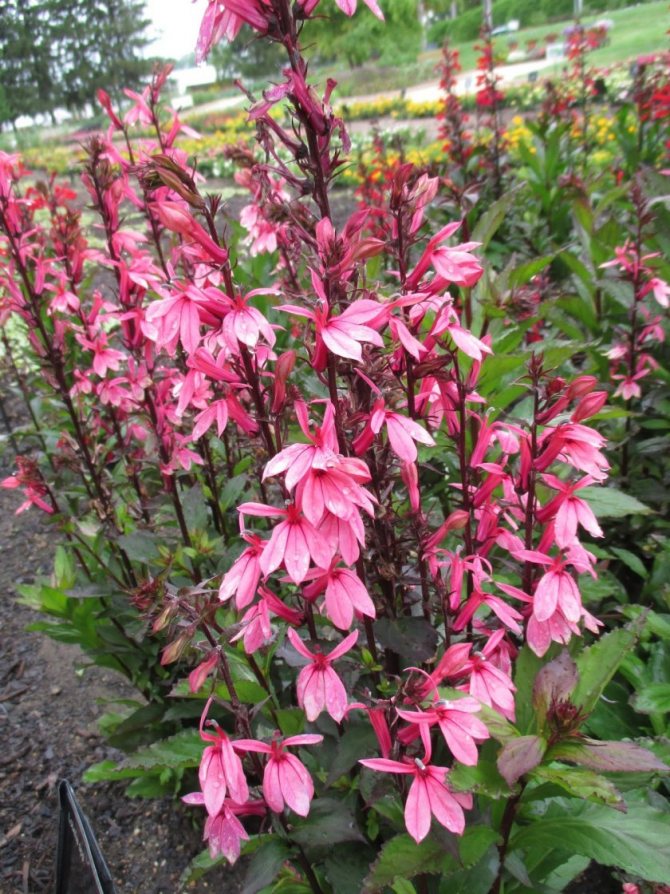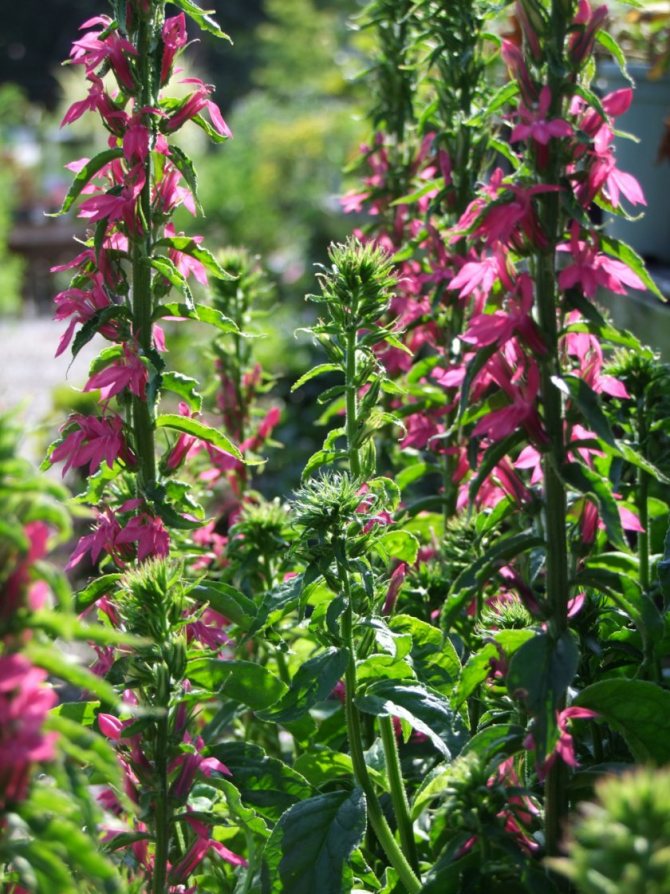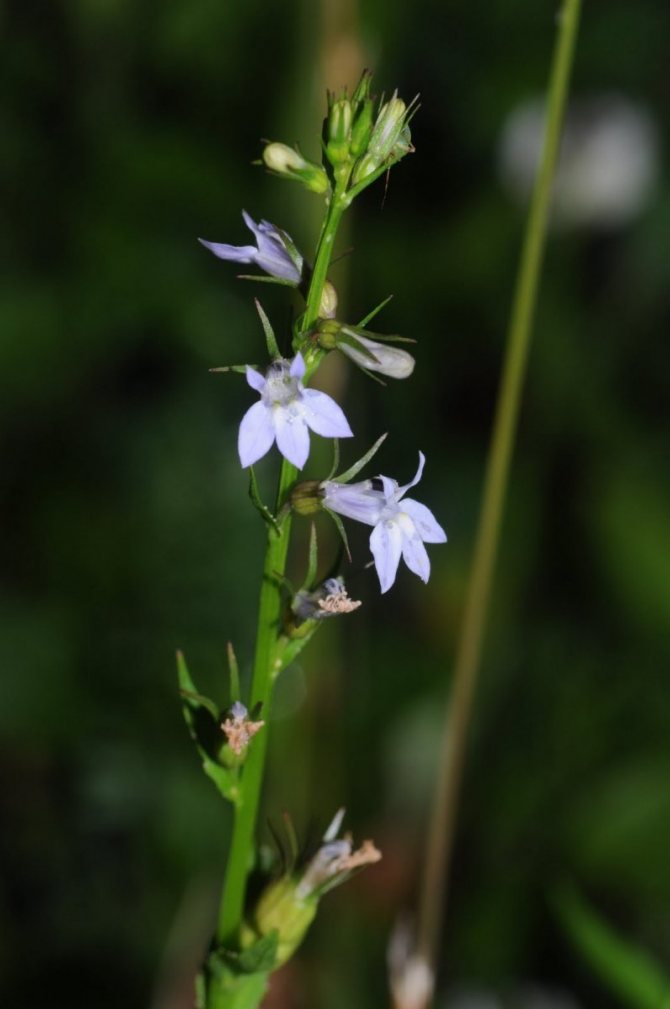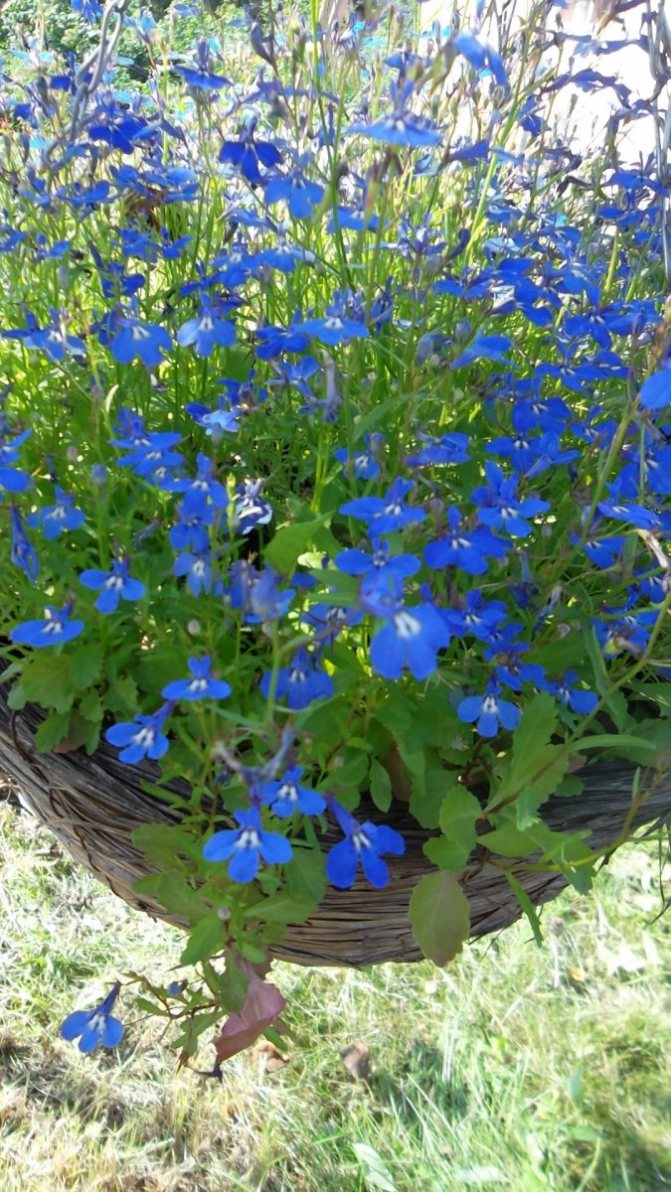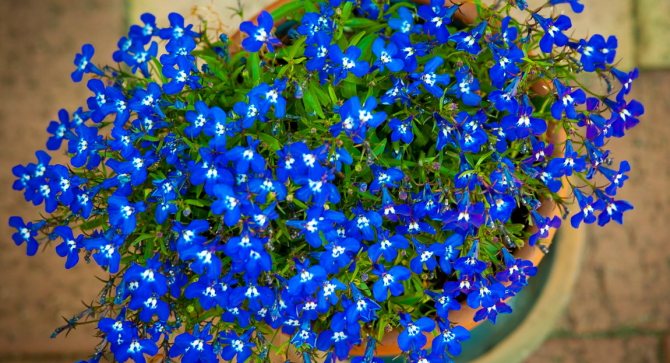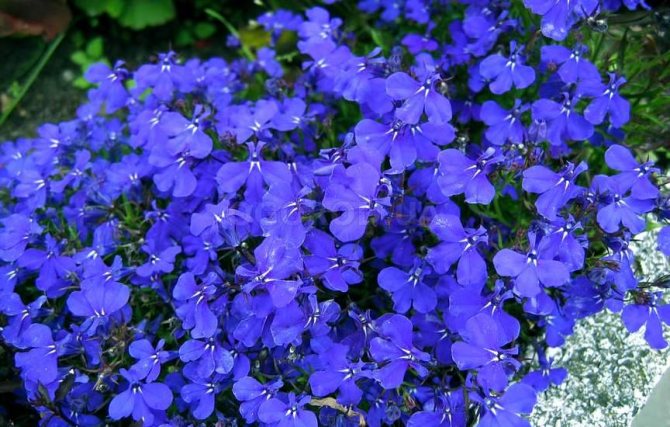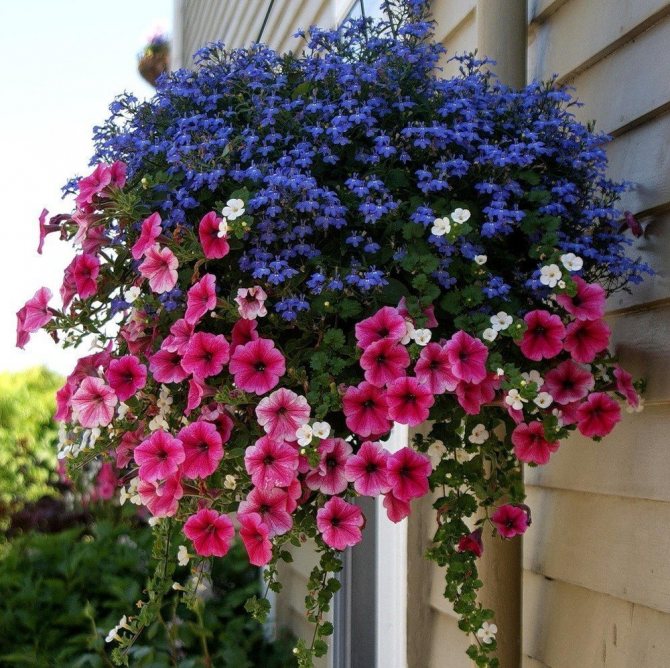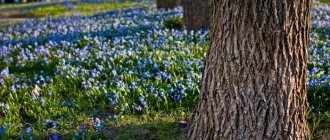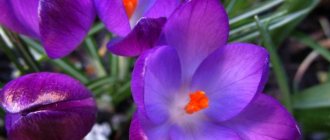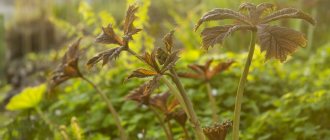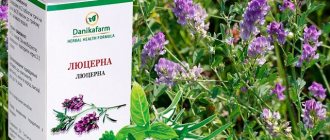Not only tall flowers with large inflorescences look elegant and worthy of becoming a flower bed decoration. Small, but abundant and bright flowering looks no less presentable - a kind of weightless cloud of delicate flowers. Lobelia, which is increasingly appearing on balconies and flower beds in all corners of the country, belongs to just such colors. Lobelia ampelous deserves special attention, which is a universal "tool" of designers: it is beautiful in hanging pots and balcony boxes, suitable for decorating flowerpots, pots and landscape compositions. Everything is fine in lobelia, but the difficulty lies in growing this flower.
Planting and caring for ampelous lobelia, with photo and video instructions, will be discussed in this article. All stages of growing flowers will be described in detail here: from seeds and seedlings to planting in a permanent place and the rules of care.
Description of lobelia
There are more than 300 different types of lobelia, some of which are used to create various medicines for the treatment of lung diseases.
Cultural plants are presented in 20 species, caring for all varieties is considered a simple job, available even for a novice florist. It is not required to pay too much attention to this process, and lobelia can be planted with seeds or seedlings.
In the Russian climate, lobelia is grown as an annual plant. It is represented by a small bush, the height of which does not exceed 20 cm, although the height of some unique varieties can reach 1.5 m. In appearance, the bush resembles a ball. The stems are thin and branching from the base of the plant. More lanceolate leaves grow on them. The flowers are axillary and two-lipped, and are usually 2 cm in diameter. Their colors can be different depending on the variety, but the most common are white, blue, purple or purple flowers.
Important! Lobelia bloom begins in mid-June and lasts until early autumn, and at the end of flowering, large-sized fruits remain, represented by multi-seeded capsules, and the seeds in them can be effectively used for planting for three years.
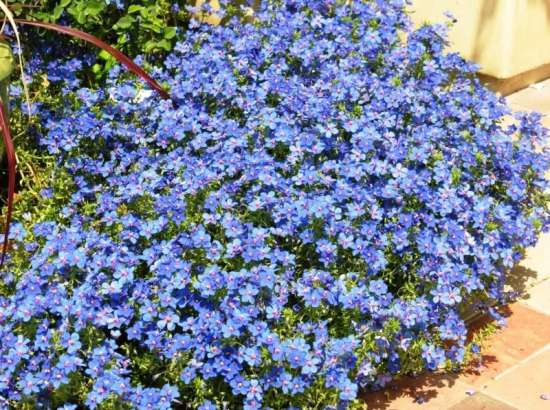
Lobelia in landscape design
The delicate and bright colors of the annual are perfectly combined with other beautifully flowering plants. Suitable companion species: petunia, edelweiss, balsam, pelargonium, salvia, rudbeckia, verbena. It is important to arrange the plants according to the height of the bushes and stems so that the lobelia does not cover the undersized names.
Helpful information:
- The flower is suitable for decorating flower beds, arranging borders.
- Delicate buds on graceful stems add bright colors to the alpine slides. Rocky areas improve the outflow of moisture from the landscape composition, which reduces the risk of developing harmful fungal flora.
- Low-growing varieties are used for carpet decor.
- Interesting options: bright azure lobelia flowers in a tall round vase combined with white petunia, ivy and scarlet pelargonium.
- Some designers create amazing compositions: a “flower fountain” of three shallow vases of different diameters (on high legs) with lobelia of one or several shades.
- Group plantings of lobelia of peach, blue and purple flowers give a colorful entourage to the boring corners of the garden.
- Ampel varieties look spectacular in hanging pots and flowerpots. Experienced growers advise planting lobelia in coconut inserts with multiple holes. A soil mixture is poured inside the elements.
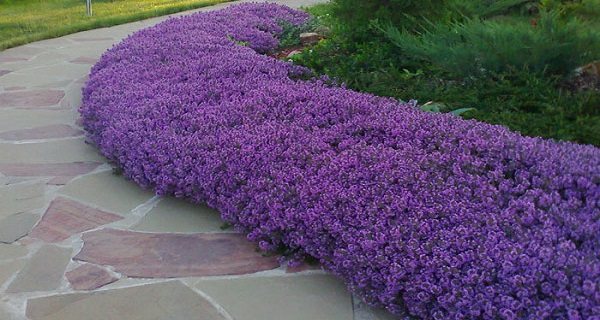

Lobelia is a low plant with a pronounced decorative effect. Delicate flowers and bright greenery form a lush carpet on the site, the alpine hills. Ampelous varieties look spectacular in wide vases on a leg and hanging baskets. Lobelia is bright colors and a cute decoration for a garden, rockery, balcony and summer cottage.
More useful tips for growing Lobelia can be found after watching the video:
Types and varieties of lobelia
Lobelia can be an annual or perennial plant. The most popular are annuals, represented by the following species:
- Erinus. In another way, it is called curb lobelia, blue or black. The flower is presented in five different forms, so it is allowed to choose a climbing or dwarf plant, spreading or compact, as well as upright. A popular variety of this type is Regatta Rose, which has a bright pink color. Another variety is called Riviera Sky Blue, which has an unusual sky-blue color, so it decorates any territory.


Lobelia Regatta Rose
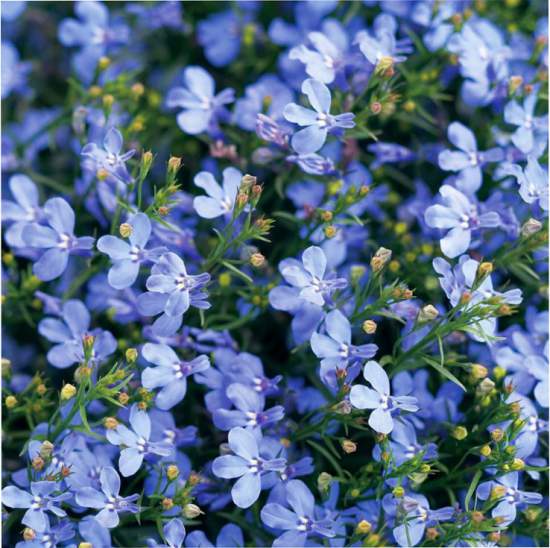

Lobelia Riviera Sky Blue
- Strong. This type of lobelia is similar to the previous variety, but the stems are quite vigorous and the leaves are juicy. The flowers are large and can have a blue or purple hue. In the center of these flowers is a unique white spot.
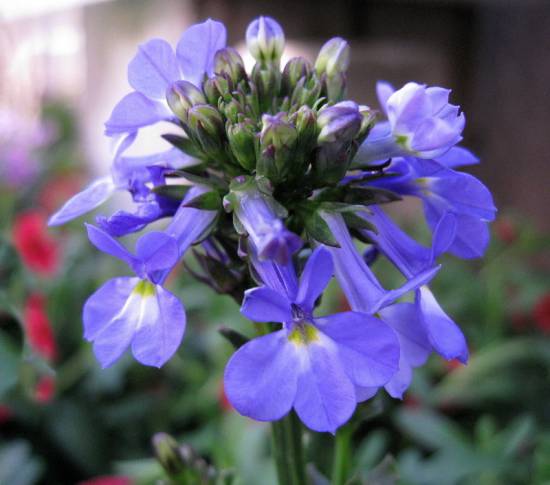

Lobelia valida
- The finest lobelia. Its height may be 35 cm, and the flowers are 2 cm in diameter. They have a blue, lilac or white tint. Grown as an annual or perennial plant.
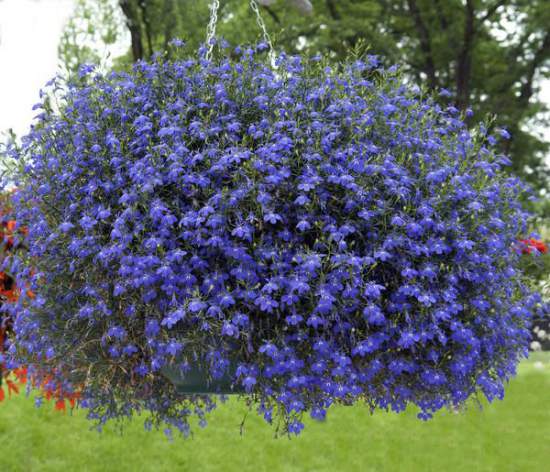

Lobelia tenuior
Among perennials, types of lobelia stand out:
- Shiny. The average height is 75 cm, and the leaves can be red or green in color. The most popular is the Queen Victoria variety of this species, and its height can be one and a half meters. The plant has large scarlet flowers that attract attention in any territory.
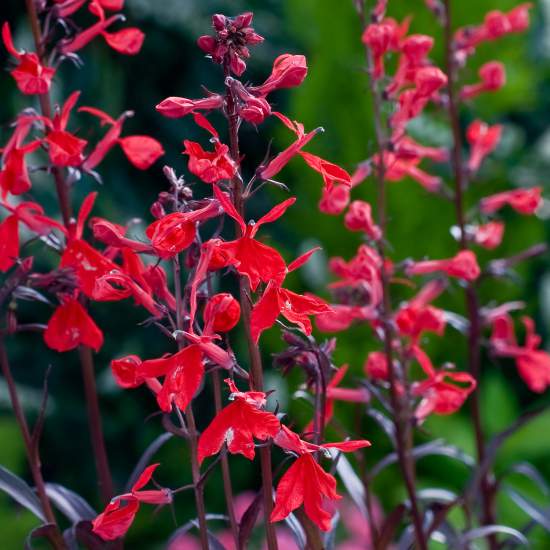

Lobelia Queen Victoria
- Dortman. This type of lobelia is considered endangered, therefore it is listed in the Red Book. Grows exclusively on sandy bottom in coastal areas. For its growth, it is important that the sand is perfectly clean, and the optimum growth depth is 70 cm.
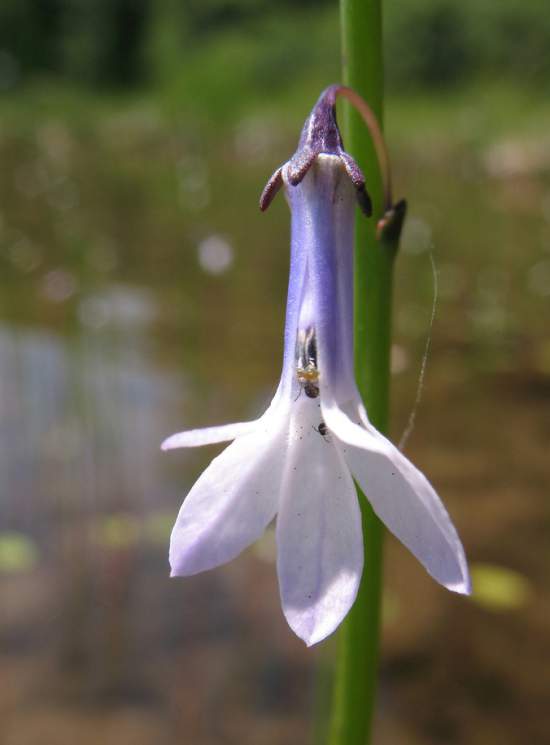

Lobelia dortmanna
- Gerardi. A frost-resistant type of lobelia that can easily cope with temperatures of -29 degrees. Its height is 1.25 cm, and all the flowers are collected in spike-shaped inflorescences. The most popular variety of this species is Vedrariensis.


Lobelia Vedrariensis
- Purple. In another way, the view is called cardinal. Its height usually reaches one meter. The flower got its name due to its bright purple color.
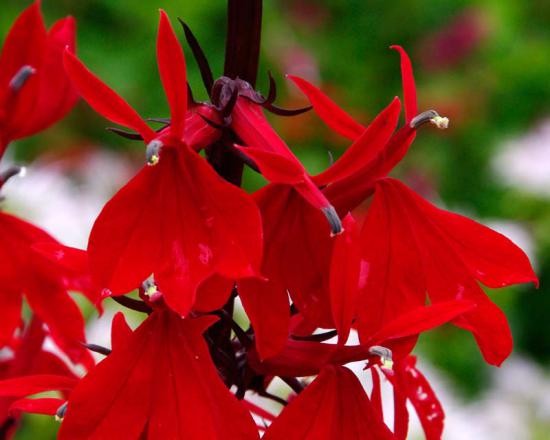

Lobelia purple (Lobelia cardinalis)
- Blue. This species was brought from America. It is equipped with blue-purple flowers, collected in large and dense spike-shaped inflorescences.


Lobelia blue
Thus, when choosing a lobelia, you should decide on the type and variety.
Important! Initially, it is necessary to decide whether annuals or perennials will be grown on the site, since the latter require care in autumn, winter and spring.
You need to know
This lovely herbaceous visitor came to us from the countries of South Africa and Mexico. There the plant was not cultivated, but grew "savage" in the stony and rainy tropics.
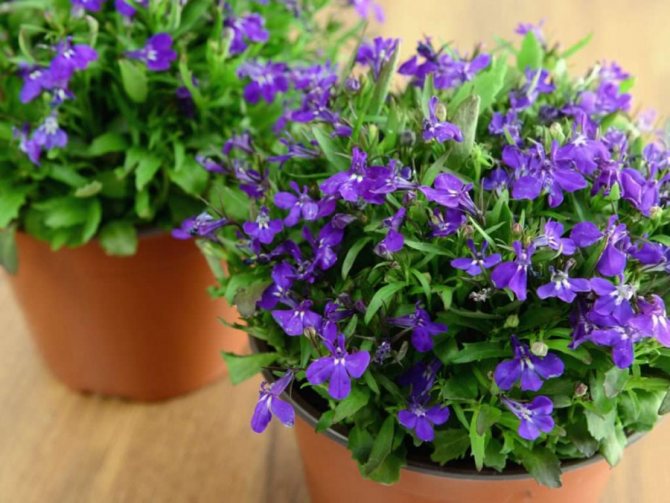

Less available specimens (white and purple) prefer grit. Autochorus was used in folk medicine; twigs with snow-white leaves adorned the heads of innocent girls.
In our latitudes with unstable weather, such a guest will need a personal approach. The cultivar also depends on the region. Before introducing a stranger in your garden, find out how it blooms and read about the varieties.


Brief characteristics and description:
- Gerardi is a crimson beauty that can withstand frost down to -30 Celsius. Reaches m at peak growth.
- Purple lobelia is capricious, preferring maximum humidity. Tall. Ideal for landscaping artificial ponds.
- The baby Darling of pink scales will grow up to five cm, cannot stand even a slight drop in temperature.
- Swallow's nest - purple color of filling. They are unpretentious, they can "rise" above two meters.
- Sessile-leaf is a poisonous lilac bush, frost-resistant. With good inspection, it stretches up to one and a half meters in height.
- Syphilitic-blue bud, small shrubs with abundant flowering.
- Brilliant l-I or fiery - thermophilic, capable of being strongly extended in length. Pleiochasia color: from green to scarlet.
Dortmann varieties are recognized as rare, elite and expensive.


Bell-shaped flowers without foliage bloom in delicate bluish tones. It is not easy to get and cultivate Dortmann, as it takes root in deep sandy alluviums.
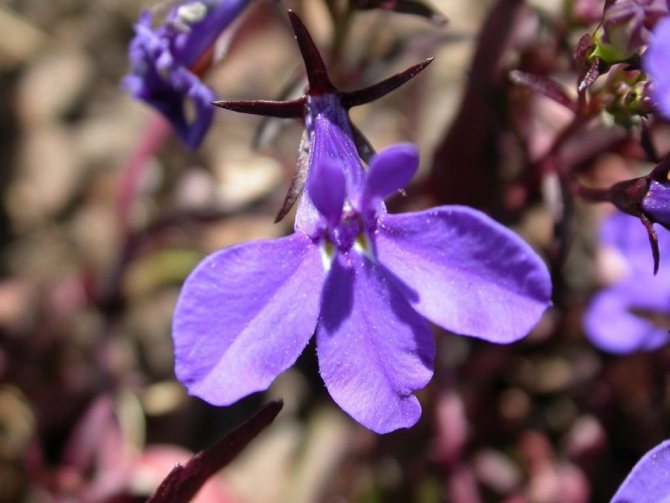

Growing lobelia from seeds
Lobelia is grown by seeds, and it is recommended to initially get seedlings at home, after which it is planted in open ground. This is due to the fact that if in the regions at the end of spring the temperature is not too warm and frosts are observed, then it is advisable to plant seedlings in mid-June.
The whole process of obtaining seedlings consists of the following stages:
- special cassettes are being prepared for lobelia seedlings;
- in early February, a drainage layer is laid in them, for which expanded clay or crushed bark is used;
- soil is poured on top, and it is desirable that it be light and perfectly mashed, and it is also recommended to mix it with coconut fibers or clean sand in advance;
- the laid soil is well watered so that in the end it is saturated with moisture;
- sowing begins only after soil subsidence;
- lobelia seeds must first be mixed with a small amount of sand, and it is also impossible to deeply plant the seeds in the ground, as this can become an obstacle to their ascent;
- from above, the seeds are slightly sprinkled with clean river sand, which will reduce the rate of absorption and evaporation of water from the soil;
- The cassette is covered with foil or glass, and then installed in a place where it will receive a lot of sunlight.
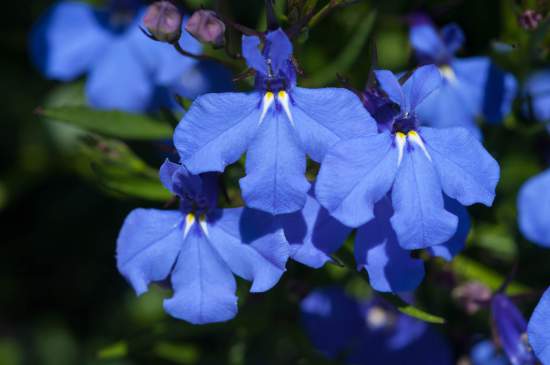

Important! To obtain high-quality and strong lobelia seedlings, it is impossible to allow excessively dry air in the room where the cassettes are located, and it is also impossible for the soil to dry out, as this will lead to thinning of the sprouts, so they may die.
Excessive moisture will not damage the lobelia, so you need to water the seedlings regularly. It is not allowed to leave small sprouts without a film, and this is especially true if the cassettes are installed in a room where there is a temperature of 22 degrees or higher.
Watering lobelia is done in the tray of the cassette, and not on the sprouts themselves, as improper watering can lead to the fact that the seedlings can be flooded.
For about the first 30 days after planting, there will be practically no shoots at all, since they grow extremely slowly. But then the growth will accelerate significantly, and as soon as the seedlings reach 4 cm in height, a pick is performed, for which about 3 pieces of sprouts are planted in disposable cups. When the seedlings are 7 cm in height, then you need to pinch the plants, which stimulates their branching.
Important! Lobelia begins to bloom at home, when it is represented by seedlings.


How is ground planting carried out?
Seedlings can be planted in open ground in the second decade of May, after the establishment of warm weather. The area where the planting will take place should be well lit or slightly shaded. Loamy or sandy soil with humus is ideal.
Important! The soil should not be too fertile, as this will lead to an abundant build-up of green mass and inhibition of flowering.
First, you need to dig up the site and equip the landing pits. The depth of each pit should be 20-30 cm, and the distance between them should be 15-20 cm. Lobelia is planted by transshipment. Having installed a root with an earthen lump in the hole, you need to fill up the earth, and then compact the top layer of soil. 3-4 sprouts should be placed in one hole. At the end of the work, the bushes need to be watered.
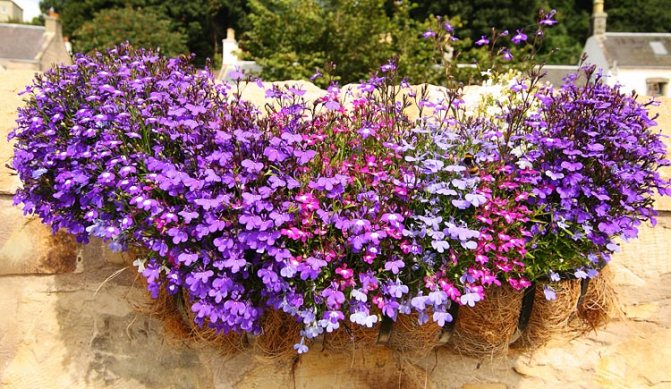

Planting lobelia
Prepared seedlings are planted in the ground at the end of May or at the beginning of June. It is necessary to make sure that the night frosts have completely stopped, as they can lead to the death of the plants. To get the perfect work result, it is necessary to take into account some of the features and rules for planting lobelia:
- a sunny site on the territory is chosen for planting so that a lot of sunlight falls on the seedlings;
- loose soil is chosen for lobelia, but it should not be extremely fertile, therefore sandy loam soil or loam is considered the best choice;
- when preparing the soil, it is allowed to apply fertilizers to the soil, but you cannot overdo it with nitrogen, since it contributes to the intensive development of lobelia leaves, but there will be no flowering;
- for seedlings, pits that are optimal in size are prepared, and the distance between them should be within 12 cm;
- landing in the pits is carried out by the transshipment method.
Some exquisite varieties of lobelia are recommended to be planted not in open ground, but in pots or baskets, and installed on balconies or verandas. These flowers are often used in the design of alpine slides and rockeries.
If perennials are grown on the territory, then in the fall they can be dug up, after which they are transplanted into cold greenhouses. In this case, they will be reliably protected from frost, therefore, in the spring, they can again land in an open area.
If the flowers are really beautiful, then they can be left at home for winter storage, and in the spring the lobelia bushes are divided into cuttings, after which they are planted in various suitable containers.
Planting is carried out only after the plants take root, and such a vegetative method is used only if there are fears that the varietal characteristics of lobelia will not be preserved by seed propagation.
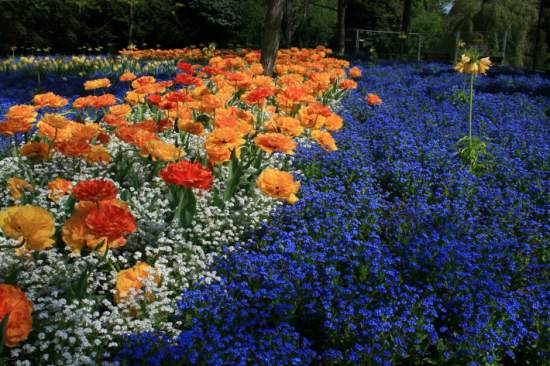

Position and soil
Lobelia can grow in a fully sunny or slightly shaded position depending on the species. In most cases, a slightly shaded position is best because the flowers lose their intense color in the sun. The completely shaded position also does not contribute to the beauty of the flower, because the lack of sunlight is the main reason why lobelia does not bloom.
The soil should be:
- fertile,
- humic,
- permeable,
- slightly damp.
Especially in summer, lobelia should be watered regularly, but it cannot stand in the water, because if the water stagnates, mold appears on the shoots. Plants planted in pots and containers require good garden soil and drainage to keep water from standing.


Lobelia - care
Lobelia is considered an unpretentious plant, so caring for it is considered easy.
The features of this process include:
- drying out of the soil is not allowed, therefore, if the summer is dry, you will have to pay attention to optimal watering of the plants so that the soil is always moist, and this is especially true at high temperatures outside;
- it is advisable to water the lobelia twice a day in dry weather;
- pruning should be done immediately after the first flowering of plants, and pruning of the stems is done at a level of 5 cm from the ground, which will lead in the near future to the appearance of new shoots and abundant re-flowering;
- without fail, fertilizers are applied for lobelia two or three times during the summer, and the use of mineral fertilizers is considered optimal.
Thus, caring for lobelia is a simple process, as you just need to make sure that the soil does not dry out, as well as remove weeds, cut off shoots and fertilize the soil.
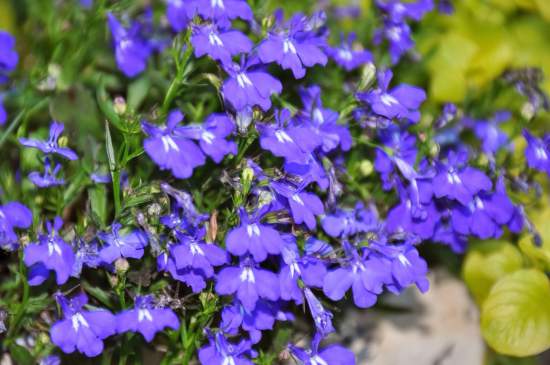

Extend your pet's life
All of the listed modifications outside their range are considered annual. They don't live long with our atmospheric phenomena. With the onset of light frosts, they fade. The slightest temperature drop affects them negatively.
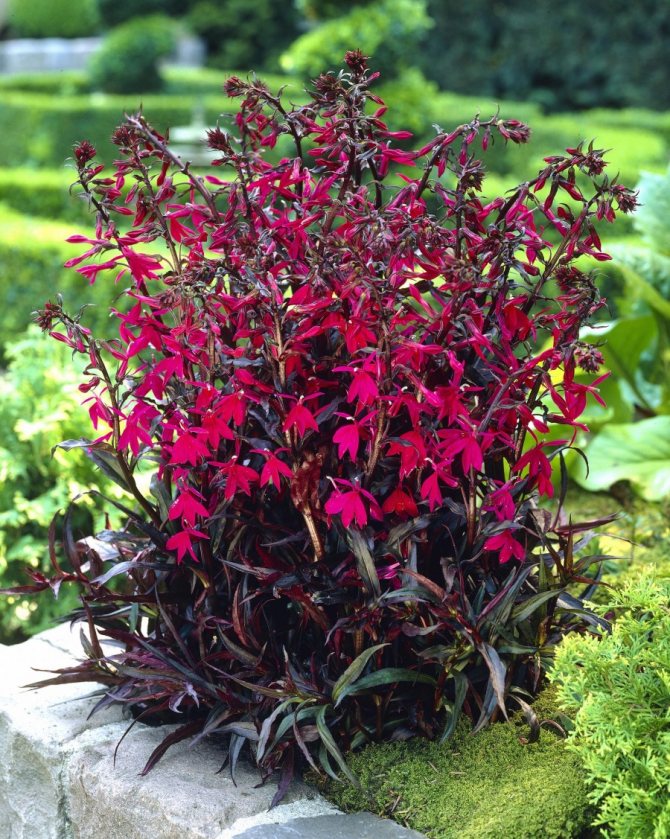

But experienced gardeners and biologists note that it is possible to improve the situation. Any flower will be a long-liver if it is transplanted into a home climatron in advance or transferred to a heated or residential building.
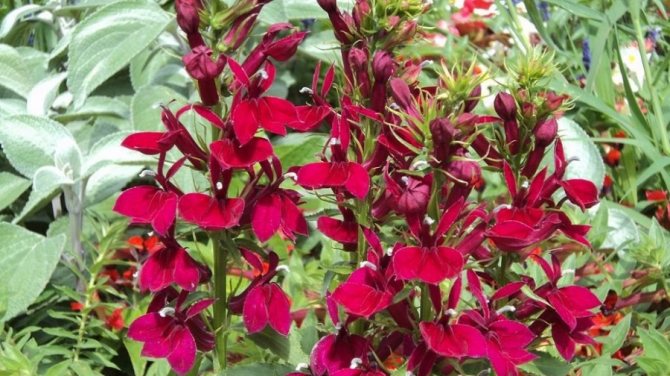

Lobelia after flowering
After flowering lobelia, you can choose two options for work:
- the plant is removed in the same way as other annuals in autumn, for which all sprouts are removed, and, if necessary, seeds are collected, which can be used in February to obtain new seedlings;
- plants do not move until spring, but it is taken into account that lobelia has a unique feature of rapid self-sowing reproduction, but disorganized reproduction leads to late flowering of plants.
Important! If the owner of the territory wants to grow these beautiful flowers on the site every year, then it is advisable to collect the seeds in the fall, and then get the optimal seedlings from them, planted in early summer.
Collecting the seeds is quite simple, since it is enough to cut off the lobelia bush, after which the plant shakes over the spread film or newspaper. The resulting husked seeds are sifted through a sieve. The resulting quality seeds are placed in a matchbox or other suitable container in which they are stored in a warm and dry place until February.


Lobelia Queen Victoria
How to propagate lobelia: by cuttings or dividing the bush?
Cutting is used when inheritance of maternal traits is required. To this end, you need to dig out the strongest bushes in late autumn and plant them in pots. The containers should be stored in a cool greenhouse or in an apartment on a windowsill. In winter, the perennial lobelia flower needs to be regularly watered and ventilated. After the onset of spring, the cuttings are cut (each length is 8-10 cm), placed in a container with a root former according to the instructions for the preparation. Cuttings are planted separately in plastic cups.
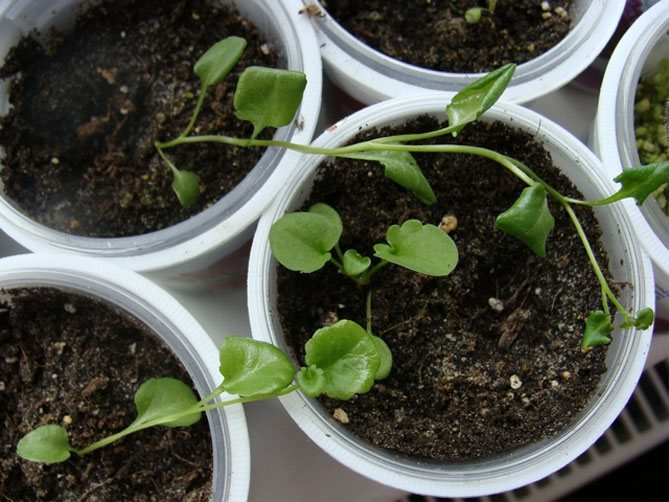

A less popular breeding method for lobelia is dividing the bush. Reproduction is carried out in the spring when the first shoots appear on the bushes. A healthy bush is dug up and divided into parts, after which the seedlings are placed in the planting pits prepared in advance.
Diseases and pests of lobelia
Lobelia pests are various insects found in the garden or in the garden. These include aphids, ants, ticks, slugs, and beetles. To protect lobelia from their negative effects, you must use special protective equipment.
Important! It is especially necessary to take slugs seriously, which, by their effect, can lead to the death of a flower.
To protect lobelia from slugs, you need to block their paths or use special chemicals. It is necessary to carry out processing in the evening.
There are several types of lobelia diseases, and they can be bactericidal, fungal or viral. Various insects usually act as pathogens. It is quite simple to determine the presence of the disease, since ugly spots of different colors begin to appear on the leaves. Treatment consists in removing damaged parts of the plant, as well as in processing it with special medicines.
Subtleties of handling
Exotic care is based on three "elephants": moisture, looseness, pinching. Watering is carried out at the root as it dries.The land near Lobelia is loosened every two days, plowing shallow grooves close to the trunk and a dozen centimeters around.


For splendor, it is recommended to pinch off barren flowers and faded shoots.


Important! If Lobelia grows in areas with mild cold, they do not need to be brought to a greenhouse for the winter.
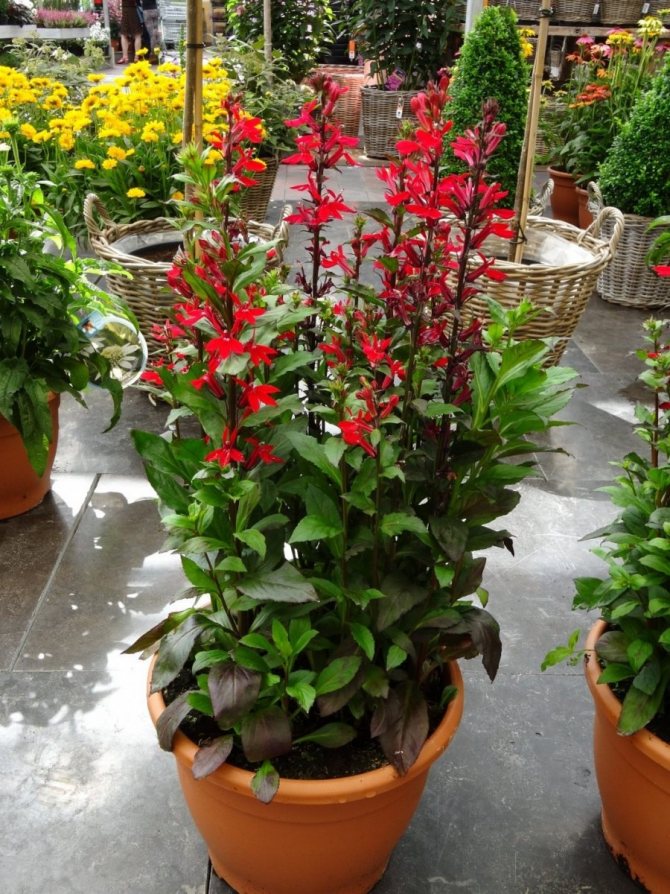

Towards the end of September, trimming and dusting with "breathing" shelters (hay, sawdust, cotton fabric with a thin layer of eco-friendly insulation) is made.
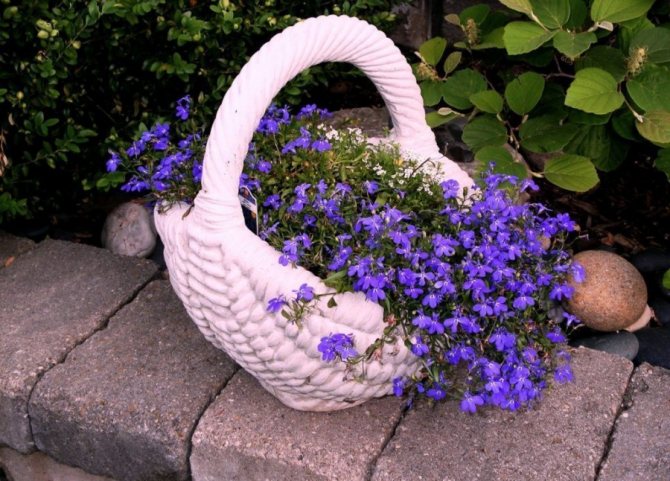

Conditions favorable for growing
Lobelia garden - annual. She is photophilous, but at the same time shade-tolerant, quite resistant to cold. Loves watering, but does not tolerate waterlogging and can rot. It is very important to find a balance here, because if there is insufficient watering, the plant simply stops blooming. Therefore, it is necessary to ensure that the soil is always slightly damp. This is especially important in the summer heat.
Soils for planting ampelous lobelia or any other type should be well-drained, medium moisture, sandy loamy or loamy. It is better to choose an open place for growing in the garden, since the plant loves bright diffused light. At the same time, it does not tolerate direct sunlight, so it is desirable that in the hottest time of the day the plants are in the shade.
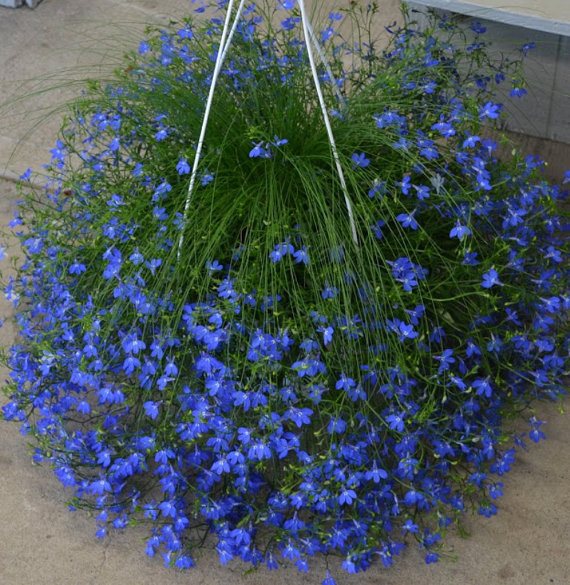

Collection and selection of seeds for planting
It is believed that ampelous lobelia is more demanding to grow than the bush variety. In fact, there are varieties that are distinguished by their unpretentiousness: all flowers that are blue or blue in color. White specimens germinate worse, develop more slowly, therefore, when sowing, you should always take into account the fact that not all seeds will sprout. Lilac and violet lobelia are even more capricious. Therefore, its cultivation should be taken with greater seriousness. But with proper care, you can count on the abundant flowering of any of the species.
When choosing seeds, you need to carefully look at the integrity of the packaging and the shelf life of the products. It is better to take more recent specimens, since they have a higher germination rate.
Important! If you collect seeds yourself, you need to remember that in this case, the bushes are not pinched or cut off. When seed pods appear on the shoots, they are cut off and placed in a glass for several days. During this time, the seed material will spill out on its own, and it can be removed in paper bags.
Origin
Wild varieties of lobelia grow in many countries of the world, but the north of the American continent is considered the homeland. The plant contains alkaloids, is poisonous, and therefore is recognized as medicinal in the pharmaceutical industry, and is used in the fight against many diseases of the respiratory system.
Interesting fact! North American Indians used lobelia herb as a smoking mixture. And even today there are tobacco factories where lobelia herb is specially added to tobacco for the manufacture of anti-asthma cigarettes.
The flower received its present name in the Middle Ages of the past millennium, thanks to the active work of the court botanist from Holland - Matthias de L'Obel.
Dangers all around
Here the Russian reality was reflected in full. Although this is a strong and hardy representative of the flora, our pests threaten it.
Powdery mildew, slugs, aphids and other garden dirty tricks will easily disappear when treated with classical methods. The worst thing: pour it over. It is oversaturation that provokes many diseases.
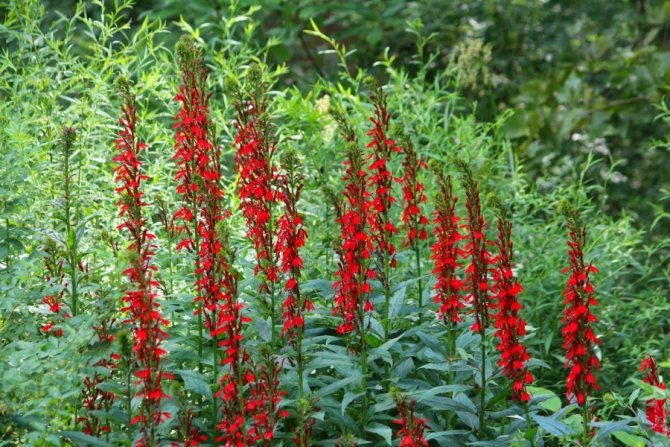

Lobelia are annual or perennial herbaceous plants, shrubs or shrubs belonging to the Bellflower family, genus Lobelia. They got their name from the surname of the famous Dutch botanist M. de L'Obel.
Lobelia grows everywhere, most common in areas with a subtropical climate. To date, about three hundred varieties of this plant are known.Some are used to create drugs for lung diseases.
Gardeners grow at least two dozen varieties of lobelia. It is unpretentious in planting and maintenance and has a rather beautiful appearance. Don't be afraid to use lobelia to decorate your property.
Characteristics of the appearance of lobelia
In Russia, lobelia is grown as an annual. It looks like a small miniature bush, the height of which is 1-2 dozen centimeters. But there are varieties that grow up to 1.5 m.
The stem of the plant is thin, branches from the very bottom. The leaves are arranged alternately, have a solid lanceolate shape, form a dense crown.
Lobelia flowers are double-lipped, white, purple, violet, but can also be in all shades of blue. Lobelia blooms from June to September.
The fruit is a box with seeds that retain their germination for 3 years. It has been used in horticulture since 1861.
How to grow
The most common type of breeding for lobelia is seeds. The plant begins to bloom 2-3 months after planting. Seedling propagation is most often used.
In early February, in special boxes, the depth of which does not exceed five centimeters, it is necessary to make a drainage layer, fill them with a prepared soil mixture of coconut fibers, sand, earth. Next, you need to water, wait until the soil settles a little, and sow the seeds, after mixing them with river sand.
Do not tamp the seeds into the ground, as this will make it difficult for them to germinate. It is best to sprinkle a little sand on top for less water evaporation. The boxes must be covered. For this, you can use film or glass.
Land with seeds should be in a well-lit place. Lighting is necessary diffused.
Lobelia seedlings are not afraid of waterlogging. She is more afraid of low air humidity and high temperatures. This contributes to the drying out of the soil and, as a result, the death of the shoots. Because of this, it is impossible to keep seedlings without covering material at 22 degrees Celsius, it is also necessary to very carefully observe the watering regime.
It is best done by pouring water into trays. The seedlings tolerate the coolness quite calmly. The first 30 days the growth of the plant is insignificant, then it will begin to grow more intensively.
It is necessary to transplant the seedlings as soon as their height reaches 3-4 x centimeters. For transplanting, 3-4 plants can be planted in one single-use glass. As soon as the seedlings grow by 3 cm, they must be pinched to stimulate the formation of branches. The first flowers will appear already at the seedlings.
Transplanting lobelia into open soil occurs at the end of May, after the danger of nighttime temperature drops has disappeared. The landing site should be well lit by the sun, the soil is preferably sandy loam or loamy.
The soil must be loosened. Also, you do not need to apply a lot of nitrogen fertilizers to it. This will result in no flowers. It is necessary to prepare pits one and a half tens of centimeters apart. Then we plant one pot of seedlings in each of them.
The planting of the climbing variety also begins with seed planting for growing seedlings. The technology is the same. The grown seedlings are planted in special baskets. You can also use a planter. At home, lobelia is used to decorate various spaces, terraces, windows.
- Clarkia graceful - varieties and types, care and planting, diseases + 78 photos
- Irises - description of the species, cultivation, reproduction + 102 photos
Campsis - planting, care, location rules, watering, types of reproduction (67 photos + video)
In addition to propagation by seeds, you can dig up the plant for the winter, place it in the basement or any other cool place until spring, thereby making it perennial.
In early spring, the bushes are divided into parts and planted in separate pots to form roots. When the cuttings take root, they are planted in the ground.This method is used in the absence of confidence in the preservation of the varietal properties of the lobelia.
How to care for a flower
Lobelia is not difficult to care for. It is very important to water it properly. The soil should always be moderately moist. The climbing variety needs watering 2 times a day.
Pruning branches is also very important. It is best done after the lobelia has faded. The branches are cut at a level of five centimeters from the ground. This promotes intense branching and re-blooming.
Several times during the summer period, it is necessary to feed the plant with mineral fertilizing.
Lobelia varieties
The most common types are lobelia erinus, lobelia is strong, lobelia is thinnest. This is from annuals.
- Bacopa - description of the species, cultivation, care, reproduction + 74 photos
Garden hibiscus - types, description, planting, care and reproduction + 69 photos- Celosia - growing from seeds and seedlings, planting in the ground and care rules + 80 photos
Of the perennial varieties, the most popular are glossy lobelia, Dortman's and Gherardi's lobelias, and blue and purple lobelias.
Lobelia photo
- Clematis - general information, cultivation, planting conditions, care and reproduction + 88 photos
Magnolia - correct planting, reproduction, care, pests and varieties + 114 photos
Astilba - growing, proper care, planting + 74 photos
Sowing seeds for seedlings
It is better to start sowing seeds from the end of February, or at any time during March. True, some gardeners practice sowing a flower in December-January. But if there is no possibility of additional illumination, it is advisable not to rush with sowing lobelia for seedlings: seedlings in this case develop slowly, and with a lack of illumination they stretch upward. A flower planted in March and grown only in natural light is more viable and compact, less often affected by the "black leg" disease.
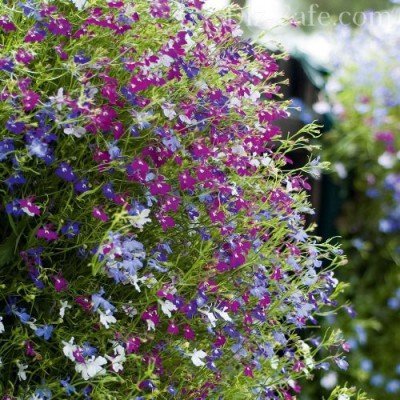

Proper cultivation and care of seedlings will contribute to their abundant flowering.
The seeds are small, dusty - for uniform planting, they are often mixed with sand. Seeds are planted in purchased soil for seedlings or in a soil mixture prepared in the fall, consisting of sod garden soil, compost (humus), peat and river sand. Dolomite flour or lime can be added to normalize the acidity of the soil substrate.
You can buy granular seeds that are convenient to plant in peat tablets and cassettes - so you get rid of the time-consuming picking step.
The sequence of planting a flower for seedlings:
- The container for planting is filled with an earth substrate, which is lightly tamped, watered and kept for 24 hours. Best of all, lobelia seedlings thrive in a wide and shallow tray with drainage holes. A fungicide can be added to the water for the primary irrigation of the land for seedlings.
- The seeds are placed on a sheet of paper bent at a corner and, gently tapping on it, they are poured onto the prepared ground, evenly distributing them.
- After sowing, the seeds are by no means sprinkled with earth, but sprayed with a very weak solution of potassium permanganate from a spray bottle.
- The dish with the seedlings is covered with glass and placed in a warm place.
Seedling soil can be prepared from a mixture of garden soil and vermiculite. Vermiculite increases the porosity and looseness of the soil, normalizes its moisture. It also protects the root system of plants from temperature changes in the environment, neutralizes soils with high acidity.
Plant features
Perennial Lobelia is a plant of the bellflower family, native to South Africa. Growing lobelia is all about choosing the right planting site. Under natural conditions, it can grow on stony and moist soils in temperate or subtropical climates.


Lobelia bloom
Cultivated plant species are widely used in landscape design, to decorate parks and gardens.With its decorative appearance, it provides a lot of scope for creativity - you can find many photos where a flower is the basis or part of a flower arrangement.
How to care for seedlings
Growing seedlings from seeds is quite difficult. You need to constantly monitor the growth process:
| Care | Recommendations |
| Shelter | Clean to eliminate fumes from the walls. Keep the seedlings open for 15 minutes twice a day. After the appearance of the first shoots, remove the shelter. Do this gradually, increasing the airing time every day by several hours. This will strengthen the immunity of young bushes. |
| Watering | Regular and plentiful as Lobelia has a poorly developed root system. The substrate must not be allowed to dry out. Water the soil through a spray bottle or pallet. It is necessary to ensure that there is no stagnation of water. This will provoke root rot. |
| Airing | When it is warmer outside +10 ° C, take it to the balcony, loggia or terrace. Gradually increase the "walking" time, after a week leave in the open air for the whole evening and night. Shade young bushes, direct rays of the sun can cause burns, and plants will die. |
| Top dressing | One-time, 30-40 days after sowing. It is best to use store-bought mineral fertilizers. They must be diluted with water at the concentration indicated on the package. After that, spray the bush with a solution. |
| Dive | Only necessary if seeds are randomly distributed throughout the container. A transplant can be done when 2-3 true leaves grow on the seedlings. Diving is done in groups of 4-8 bushes. The root system of lobelia has the ability to quickly recover. Therefore, for replanting shoots, you can cut the earth with a blade into squares. Move the pieces of soil to larger containers. |
| Pruning | To avoid a strong growth of the bushes in length, it is necessary to prune sprouts that have reached 5-6 cm. If the goal is to obtain long and hanging shoots, you do not need to pinch. After the end of flowering, wilted flower stalks must be cut off. This promotes repeated and luxuriant bud formation. The second pruning is done in August. If you plan to collect seeds, you do not need to do it (the seed should have time to ripen before the first frost). |
Note to the gardener
Quite often, inexperienced growers are faced with the problem of sowing ampelous lobelia seeds. They are so small that not everyone can evenly scatter them into the soil. What can be done in this case?
- Try to sow in good, sunny, calm (or low wind) weather. This rule will simplify the work on the site.
- To achieve an even seeding, you can mix the seeds with regular river sand, and then distribute them on the surface of the ground.
- Some put the seeds in the ground using a regular toothpick dipped in water. But this method is more suitable for growing seedlings in pots at home.
- You can also purchase seeds in granules. This is the easiest and fastest landing option.
Photo of lobelia on the site
leave a comment
Click here to cancel reply.
You must log in to post a comment.
Plot decoration
A wide variety of colors allows the plant to be used in landscape design. So, it acts as an adornment of any flower garden or flower bed.
Advice! Only annual plant varieties are used to decorate verandas and balconies.
Perennial flower species can be an excellent addition to any decorative reservoir or alpine slide. In landscape design, it is better to use plants of low varieties - they will suffer less from strong gusts of wind.
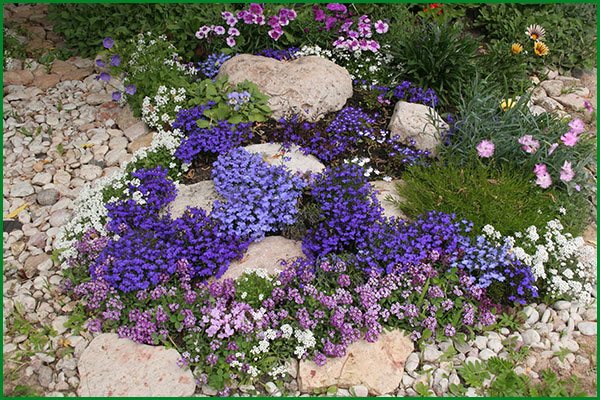

Lobelia in landscape design
In the flower garden, the combination of lobelia with marigolds, petunia, pelargonium, matrix and balsams looks good. It should be borne in mind that partner plants must have similar watering requirements.
Thus, with a little effort, you can get a bright and unusual plant on your site.By replanting lobelia in a pot for the period of cold weather, you can achieve its year-round flowering.


